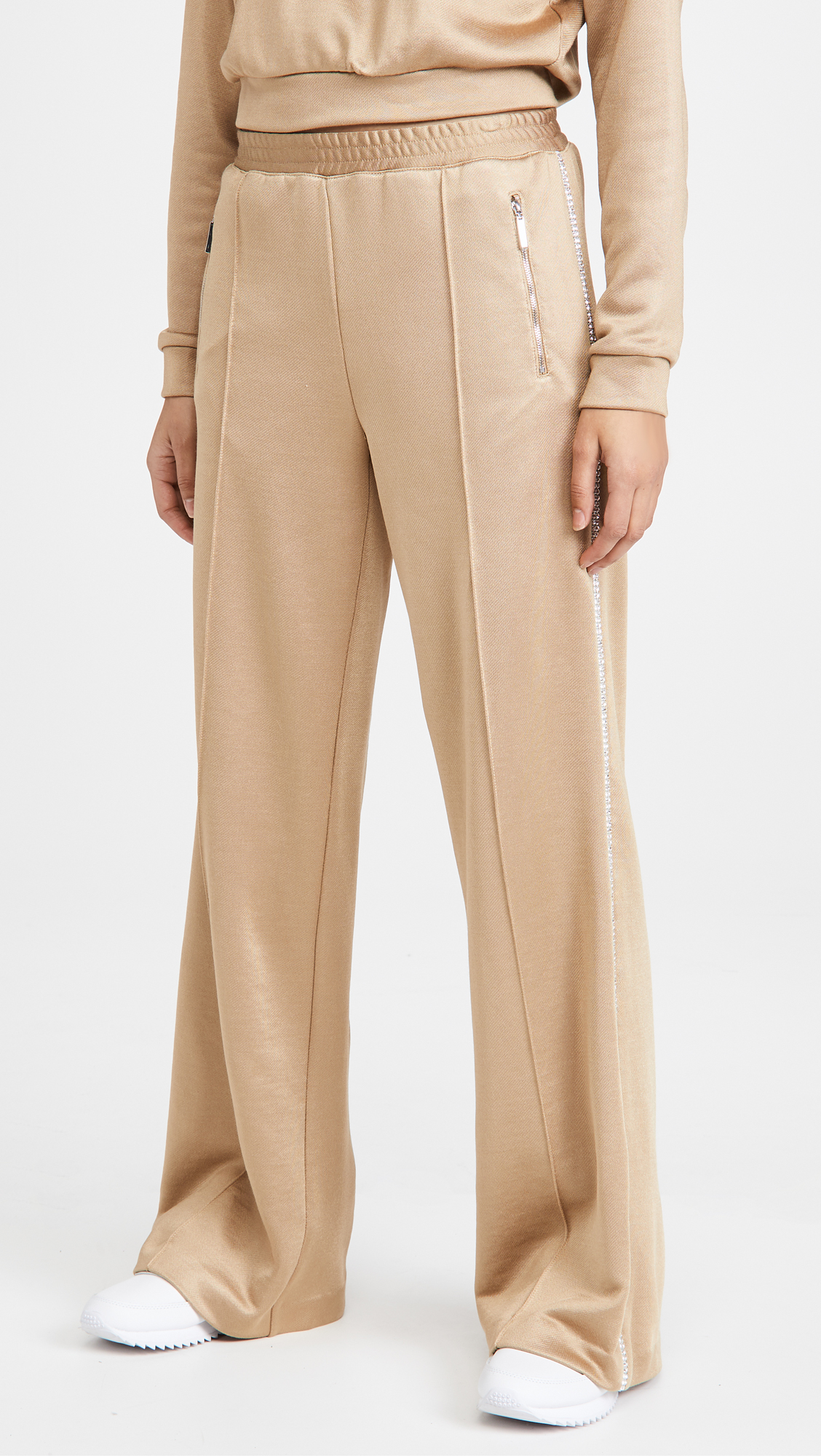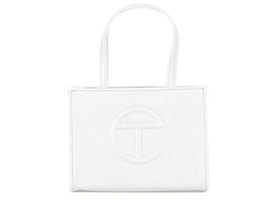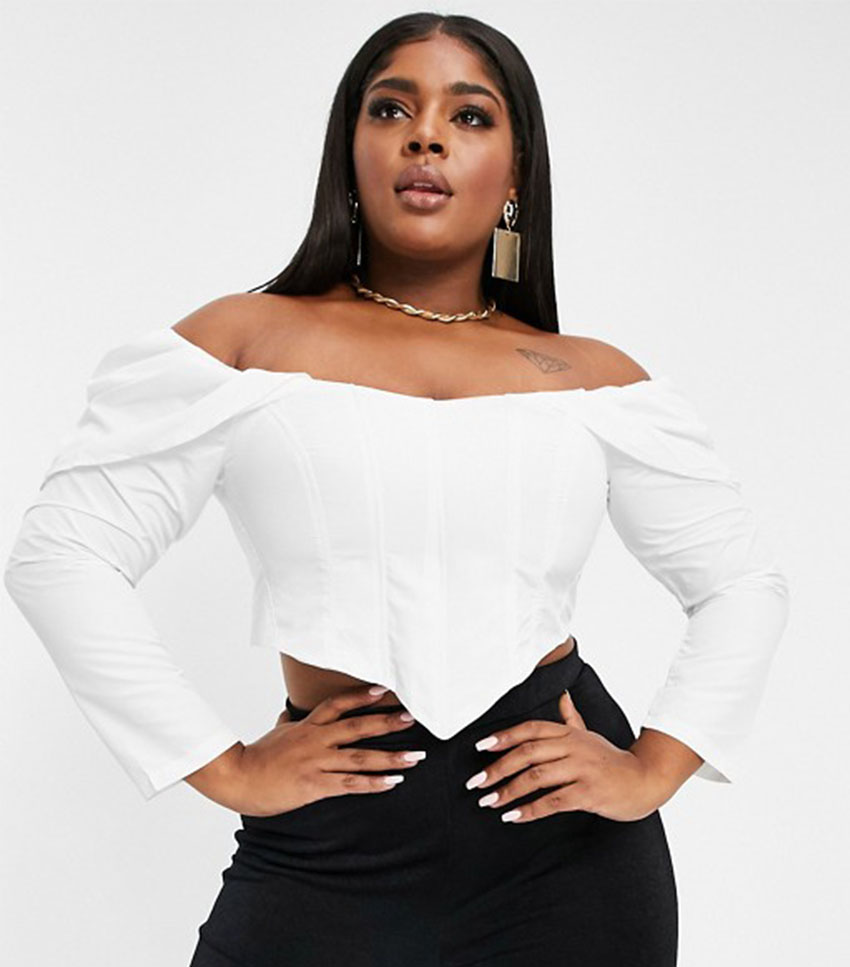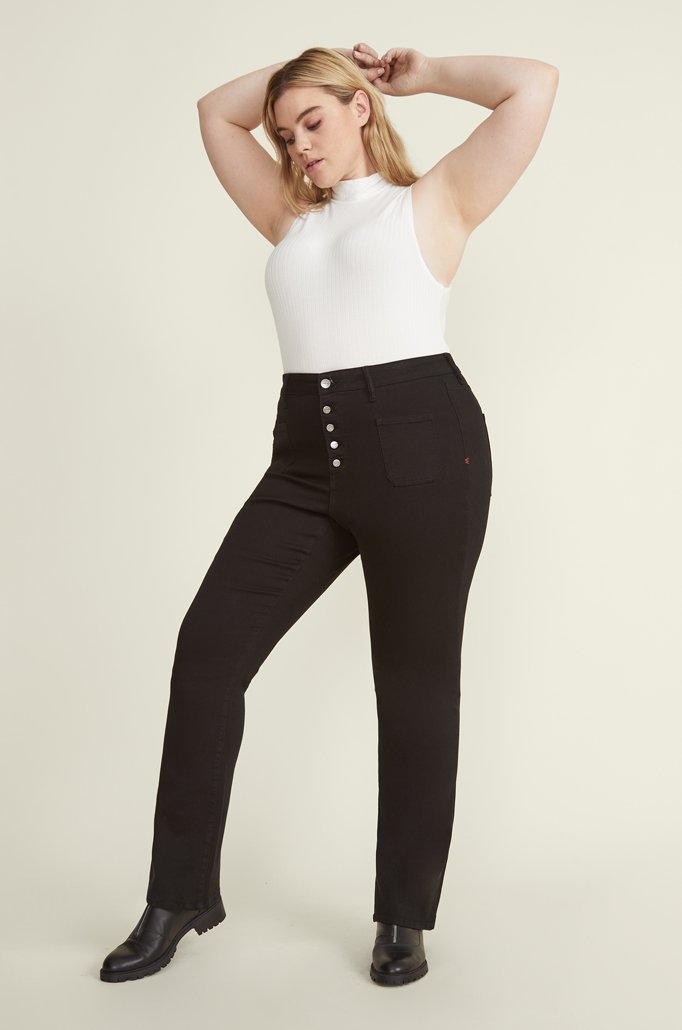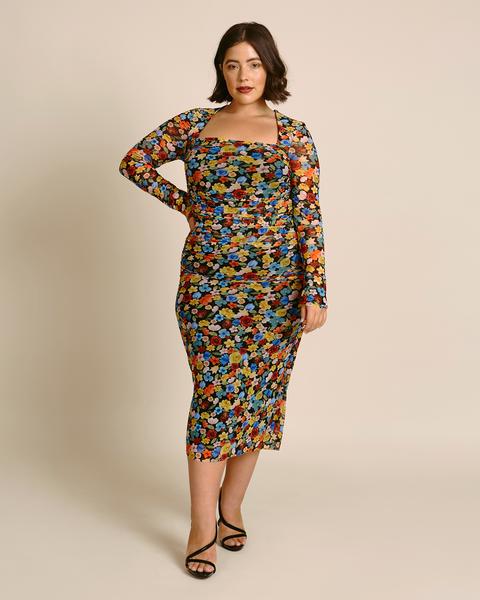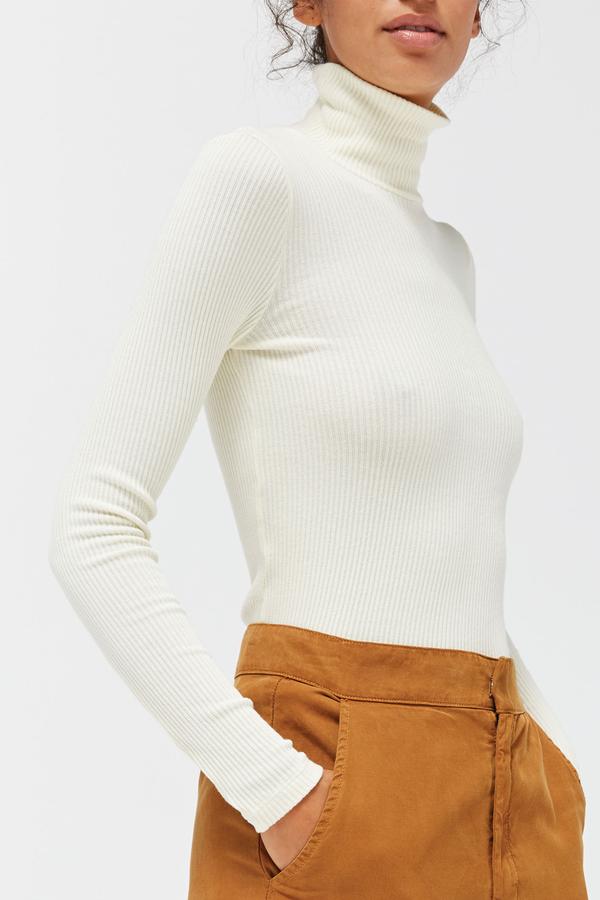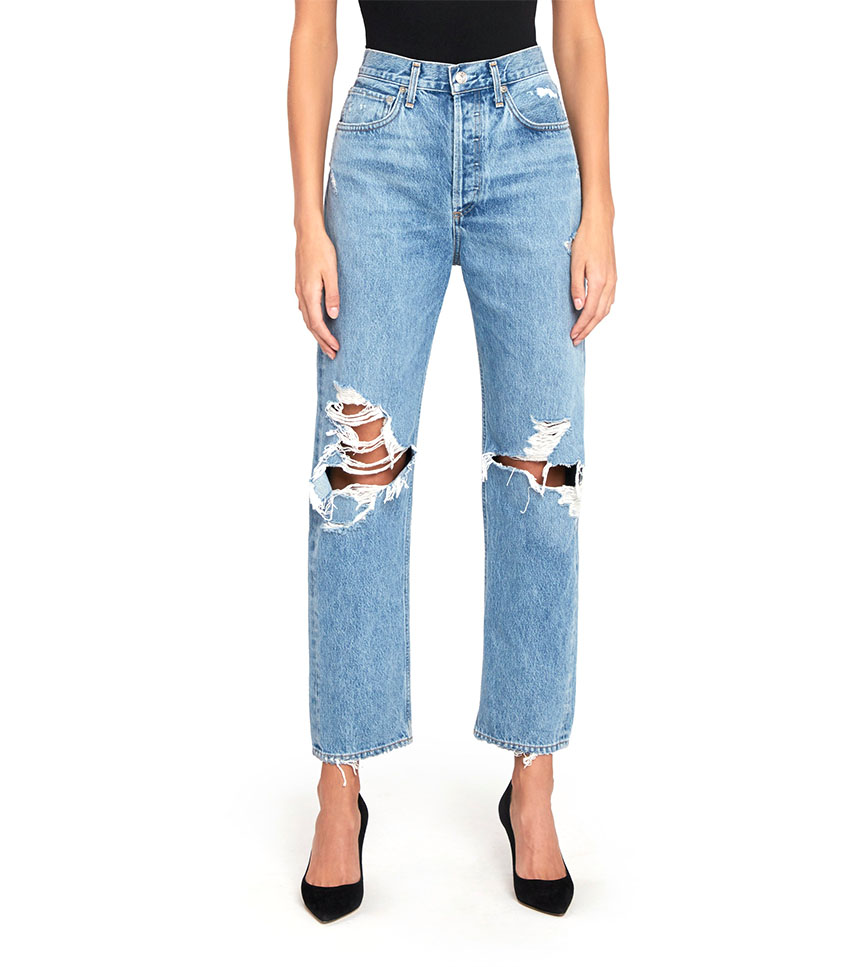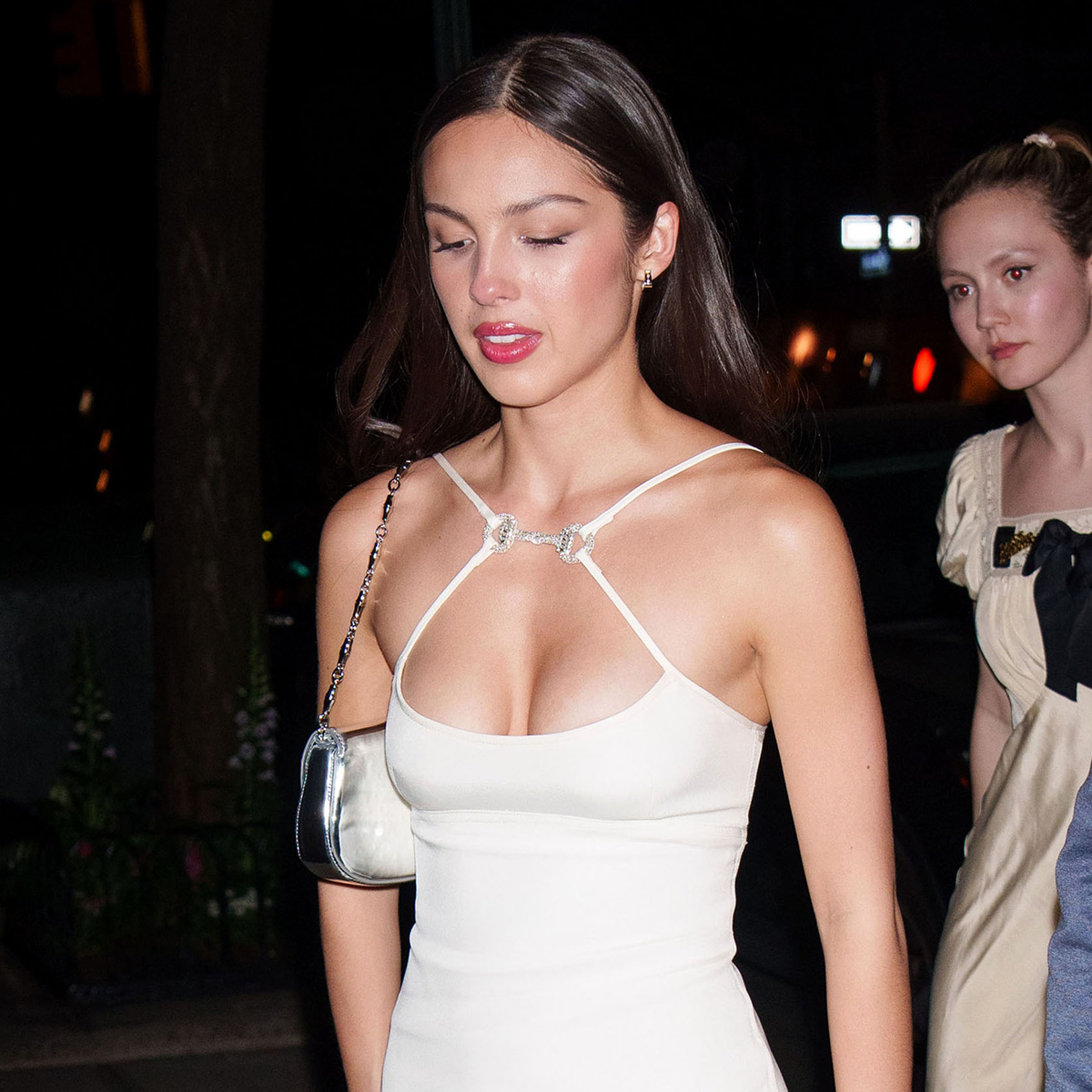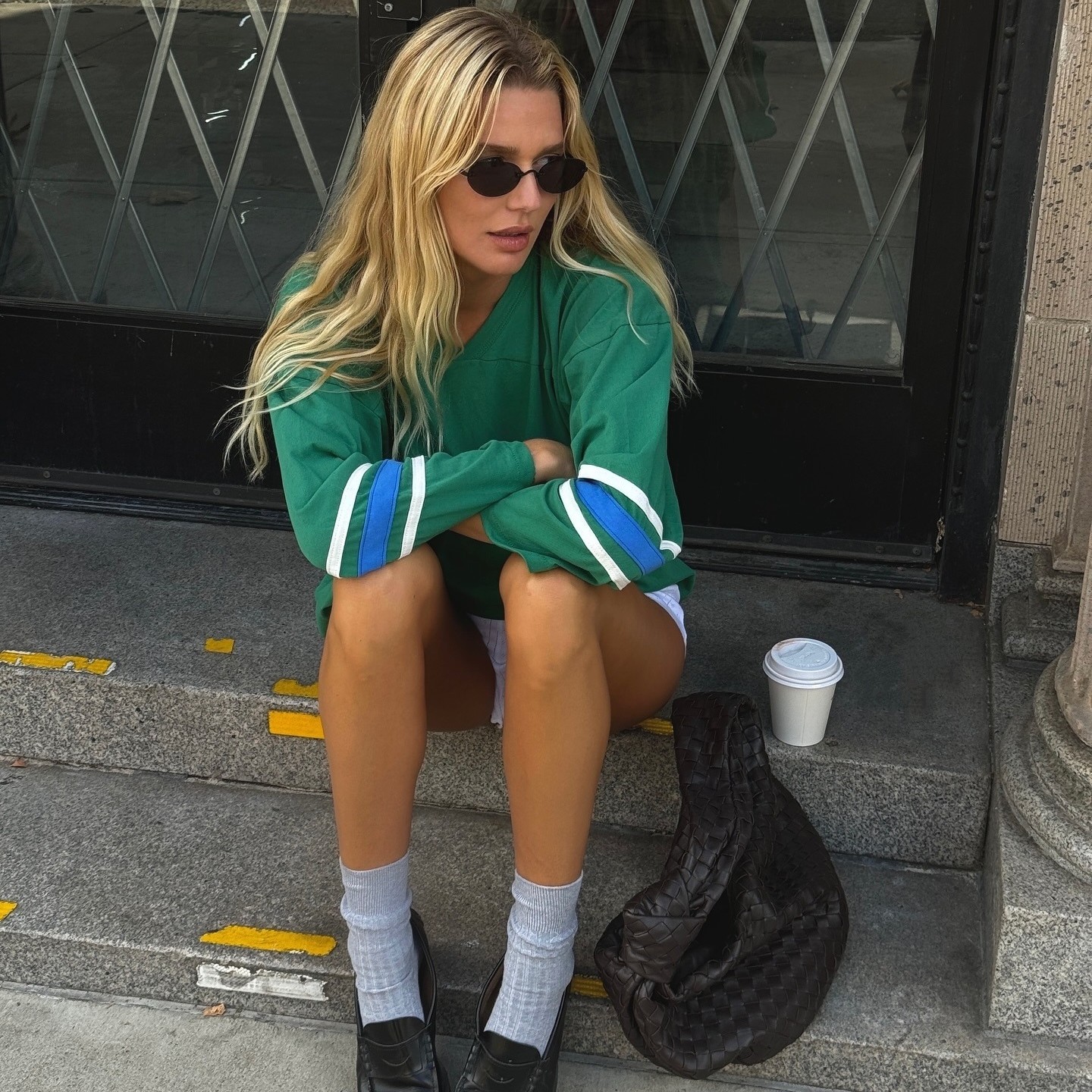7 Models Talk Size Inclusivity, Representation, and Fashion's Future
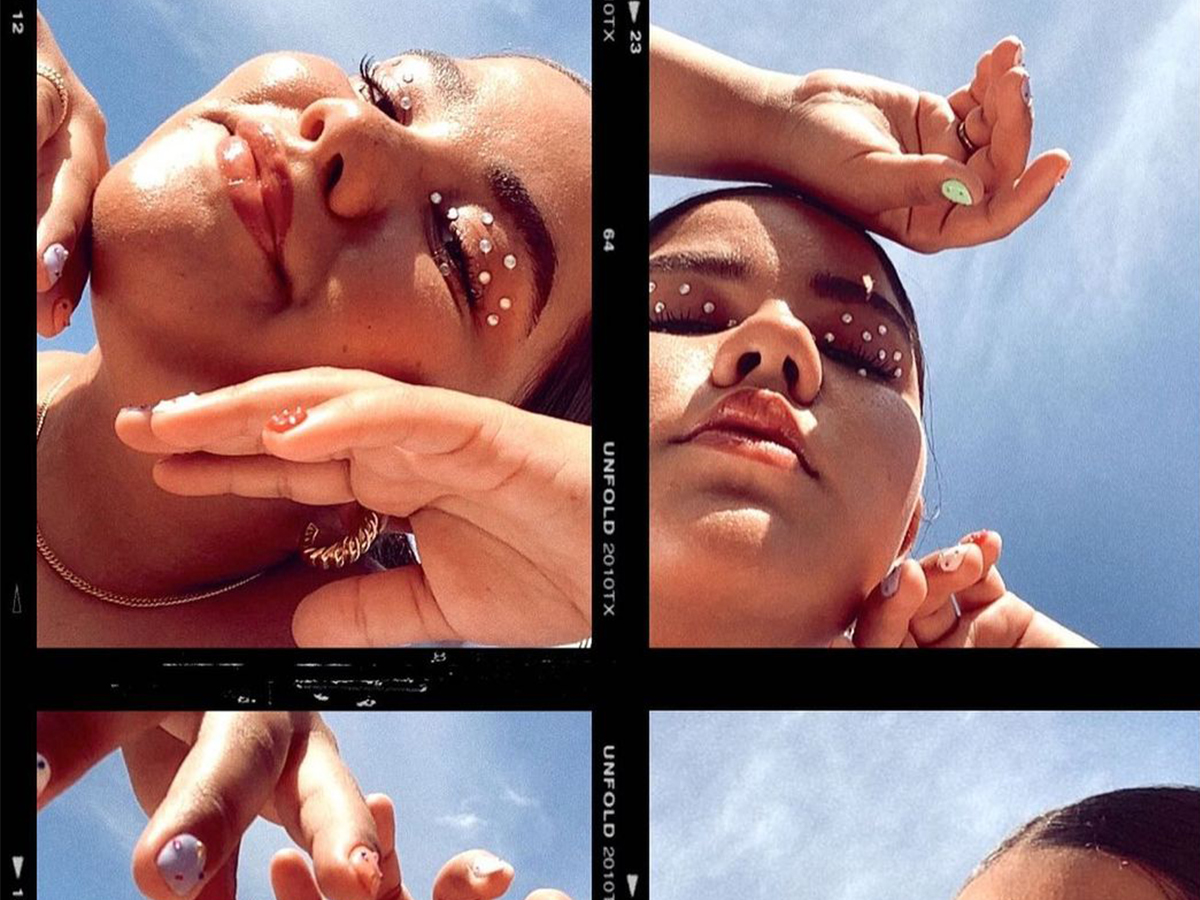
"We often hear, 'This is the first time I’ve seen myself represented in advertising or media' in our DMs," shares Jane Belfry, "and that is exactly why it’s important." Just over a year ago, Belfry launched The Btwn, a modeling agency with a singular goal: to represent talent who have long been overlooked by traditional agencies and the fashion industry as a whole. In fact, I'd go so far as to say that fashion's relationship with bodies above a size 0 has always been fraught. The path to size inclusivity in an industry as image-dependant as this has been riddled with stereotypes, labels, and tokenizations.
No question, then, that there's a long way to go until we can make everyone, and I do mean everyone, feel seen and accepted. Of the many facets of the industry, models play an important role as the faces of brands, campaigns, and magazine spreads. "I hope to help close the gap between straight-size and plus-size, do away with height and measurement requirements, and shift the focus to what makes models special in their own right," Belfry insisted.
Well, fast forward to the present-day and The Btwn is delivering on its mission. With a roster of over 50 models between NYC and L.A. and an impressive casting résumeé including features in Teen Vogue and multiple Target swim and lingerie campaigns, Belfry and her agency are already making waves in the fashion industry. And we have a feeling they're only just getting started.
"There will always be an aspirational aspect to fashion, media, and advertising," Belfry continued, "but making room for an entire range of people to be shown in those roles is crucial. Who we aspire to be should feel attainable and celebratory of many." So with celebration in mind, we tapped seven on-the-rise faces signed with The Btwn who represent the multi-faceted, label-rejecting talent the agency is known for. Ahead, read our discussion on their experience in the industry, why representation matters, and what they hope to see next in fashion.
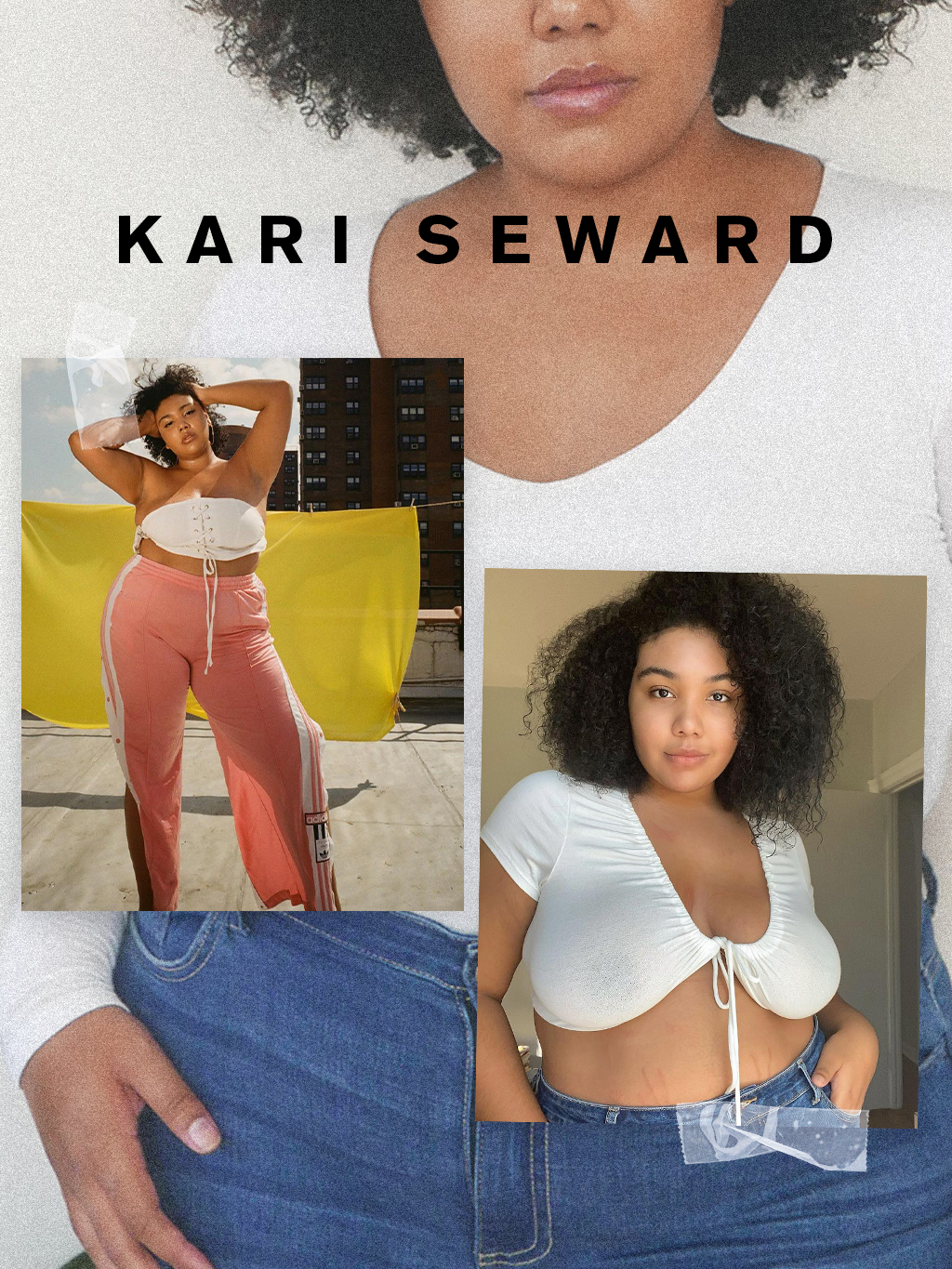
How long have you been modeling and how did you get into it?
KS: I started modeling about three years ago. I became interested after one of my friends said I’d be good at modeling and I thought it would be a great segue into acting and performing.
What have been some of your career highlights so far?
KS: The biggest part that I’ve enjoyed is meeting new people and making some amazing friends. Career highlights would include my recent Teen Vogue feature and being featured on Forbes for swimwear.
What has your experience been like?
KS: My experience modeling has been insightful not just about myself but about others. Working with others has given me more insight into other people's lives, their creativity, and their willingness to be a part of a team. That’s taught me a lot. Overall my experience modeling has been good, sometimes I meet people whose attitudes are different than mine and that is challenging, but that challenge gives me an opportunity every time I work to meet others with compassion and willingness to work together and see things from different points of view. Patience has been the biggest lesson.
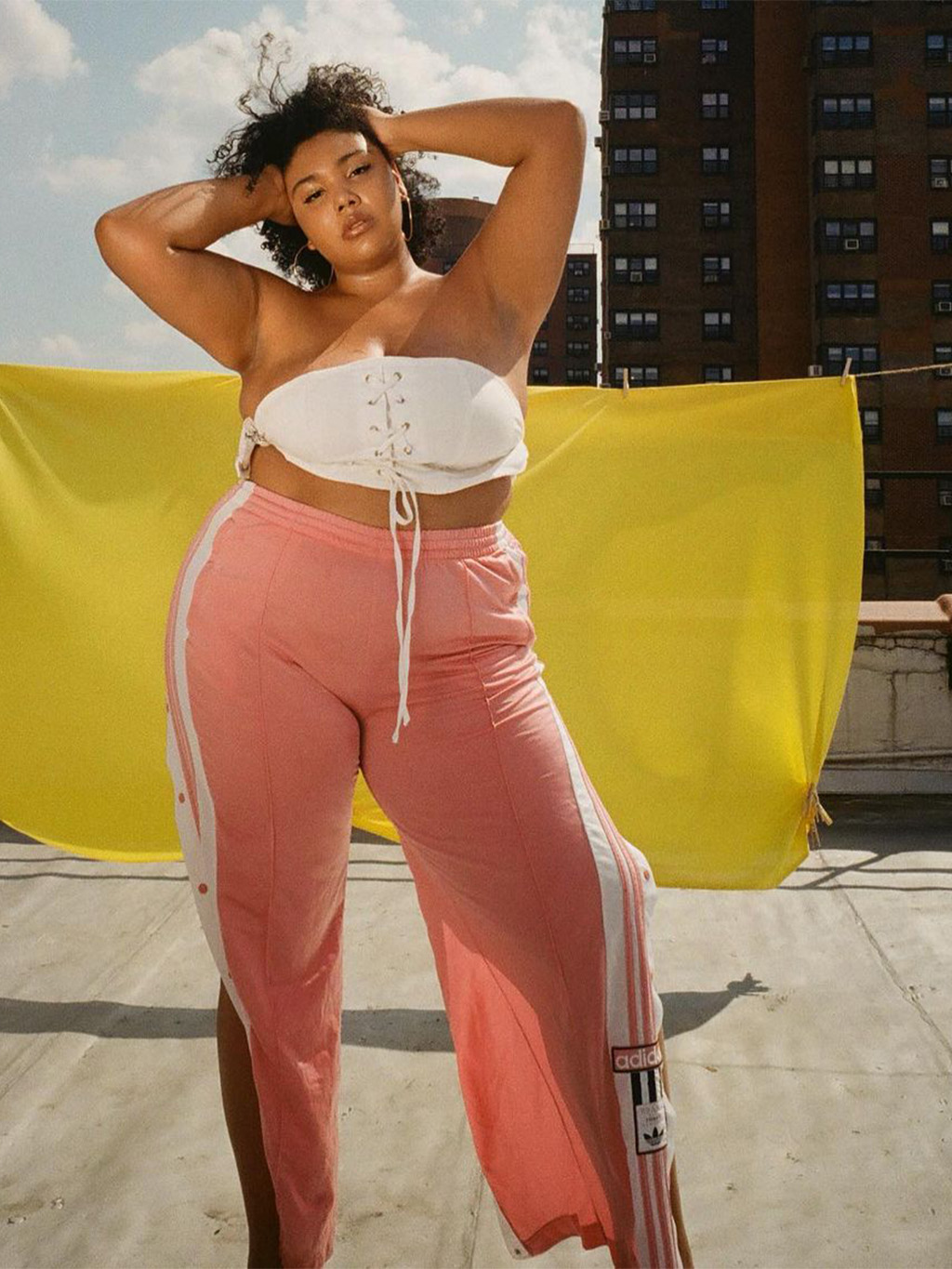
What kind of impact do you hope your work has on the industry?
KS: Of course, in my work, I would love for everyone to see themselves who has a body like mine and feel amazing. That’s definitely number one but number two is I would hope that my work shows that I am a real person and that there will always be ups and downs but if you believe in yourself if you keep the promises you’ve made to yourself and are honest with others, you can do anything.”
How do you think the fashion industry can be more inclusive of all body shapes?
KS: One thing for sure is making these avenues accessible to all people (and that means all), opening up the discourse and discussion behind fashion and where we get our clothes from, why we shop, where we shop and what’s the intention behind our work. I think as the world is changing so is fashion, our creative field, modeling, etc., so I think we can go farther we can reach for more. I feel that there is an optimistic feeling however as long as we keep these avenues accessible to all people, all bodies, all genders, people with disabilities, different races, trans models, all identities etc., that will keep the movement and progression continual.
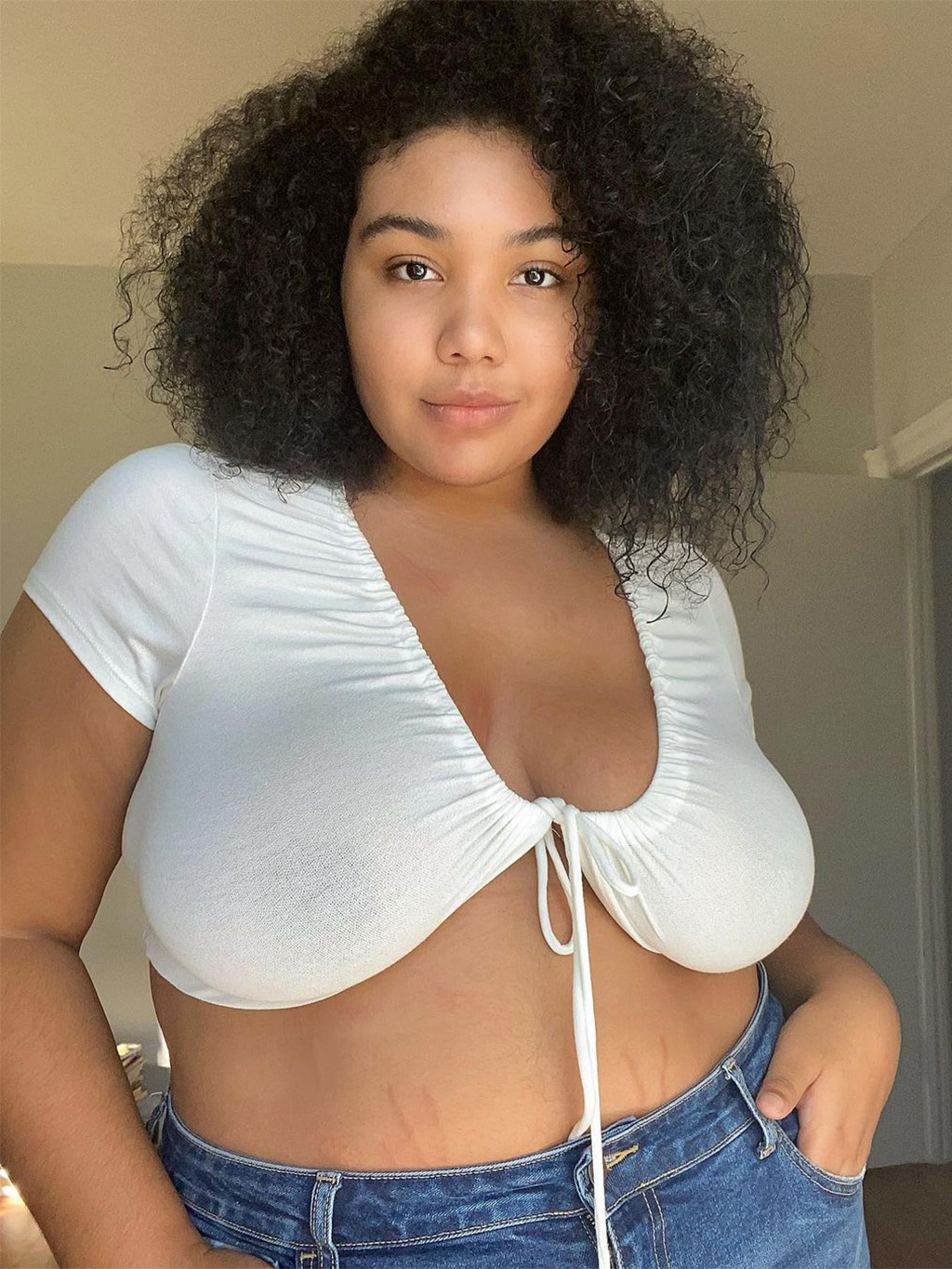
Why do you think body representation is important?
KS: Body representation is important because no one can control what they look like or how they were born. Body representation shows that there are different kinds of beautiful, there are different kinds of forms. Body representation means radically loving yourself. And if we are constantly reaching towards that then it is a win for people of all shapes and sizes. When someone looks up and sees someone else validating who they are without them asking or without them ever have seen someone like that… It changes everything. It can have such a huge impact on them that it could even last a lifetime. It did for me.
What's one thing you wish would change when it comes to conversations around size inclusivity?
KS: The one thing I wish I could change Is the discourse around confidence and using confidence as a compliment. Many people say to a person of a larger size, "Wow you’re so confident!” When really what they’re saying is you should be scared because you’re larger to wear that but because you’re not I’m just gonna say you’re confident. Many people would never tell a skinny person that they’re confident for wearing a certain outfit but it’s a different story when it comes to someone who is bigger than that. Of course, it is wonderful to acknowledge someone’s confidence but I would think twice when you see someone larger rocking something and instead maybe give a compliment that has nothing to do with that! Maybe complement their style, their creativity, their beauty, and their intelligence.
Describe your personal style. What are several pieces that define your wardrobe right now?
KS: My personal style is always in between! I would say it’s a mix of sweatpants and large sneakers, bodycon dresses, and a hint of Eileen Fisher. I am in love with the concept of style and comfort and as I transition into an older age I’m realizing my necessity to be comfortable in my body, present, and also look amazing.
Shop her style:
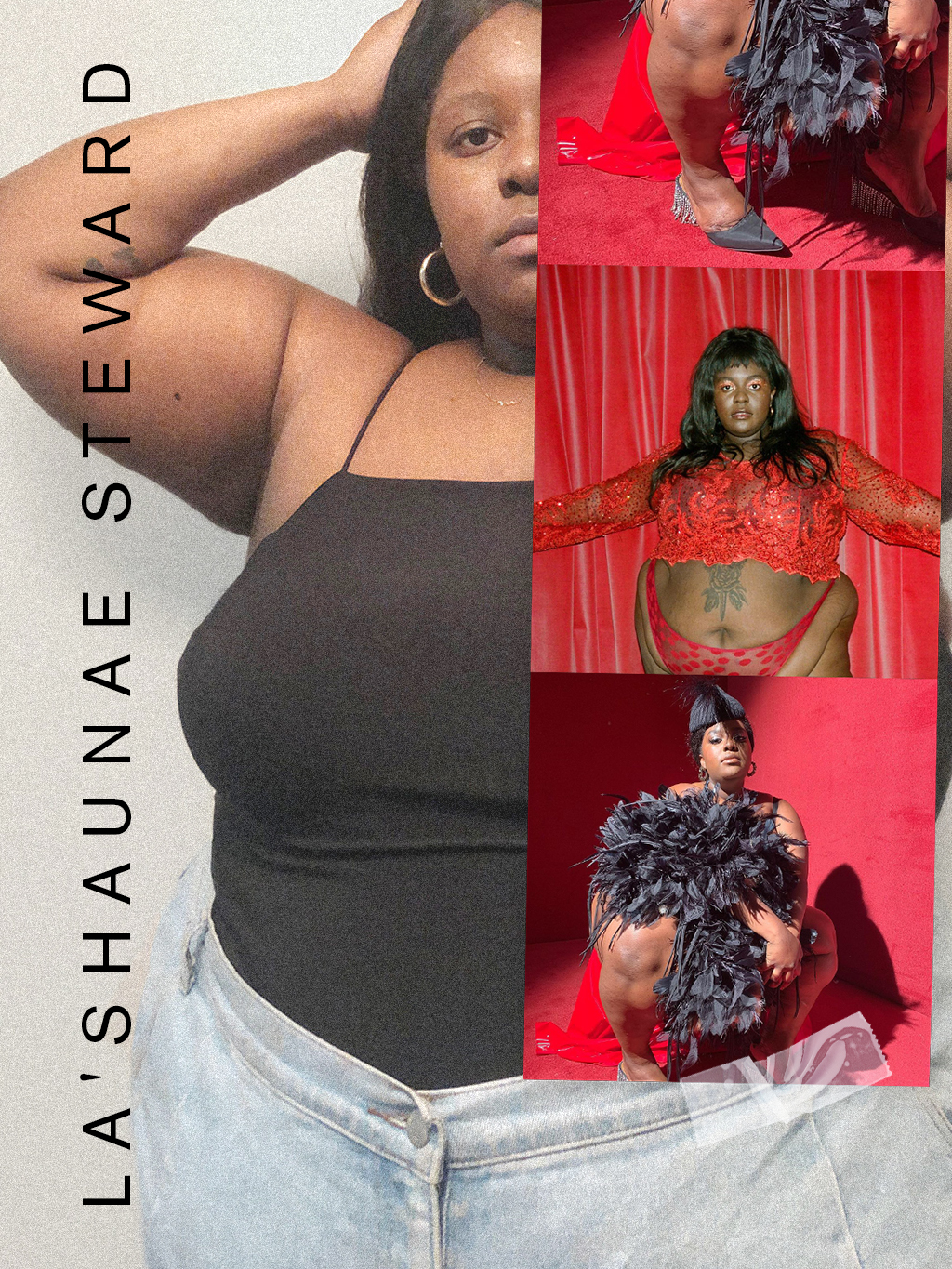
How long have you been modeling and how did you get into it?
LS: For almost six years. I started the year I left high school. I randomly started creating content around my aesthetics and outfits and would make outfit/meme posts inspired by my favorite albums and I started to get asked if I’d ever model because "the representation for alt fat black models would be cool” and I agreed and have been fighting for it ever since. Very specifically more black fat alt models over a size eighteen in high-end fashion and campaigns.
What have been some of your career highlights so far?
LS: Having a wide fit capsule shoe collection with Jeffrey Campbell (was the first design collab I ever had), shooting with Teen Vogue, and winning the dazed100 in 2019, and lots more. Makes me feel really good knowing I managed to get there on my own while being rejected by so many publications and agencies for "not having the look.”
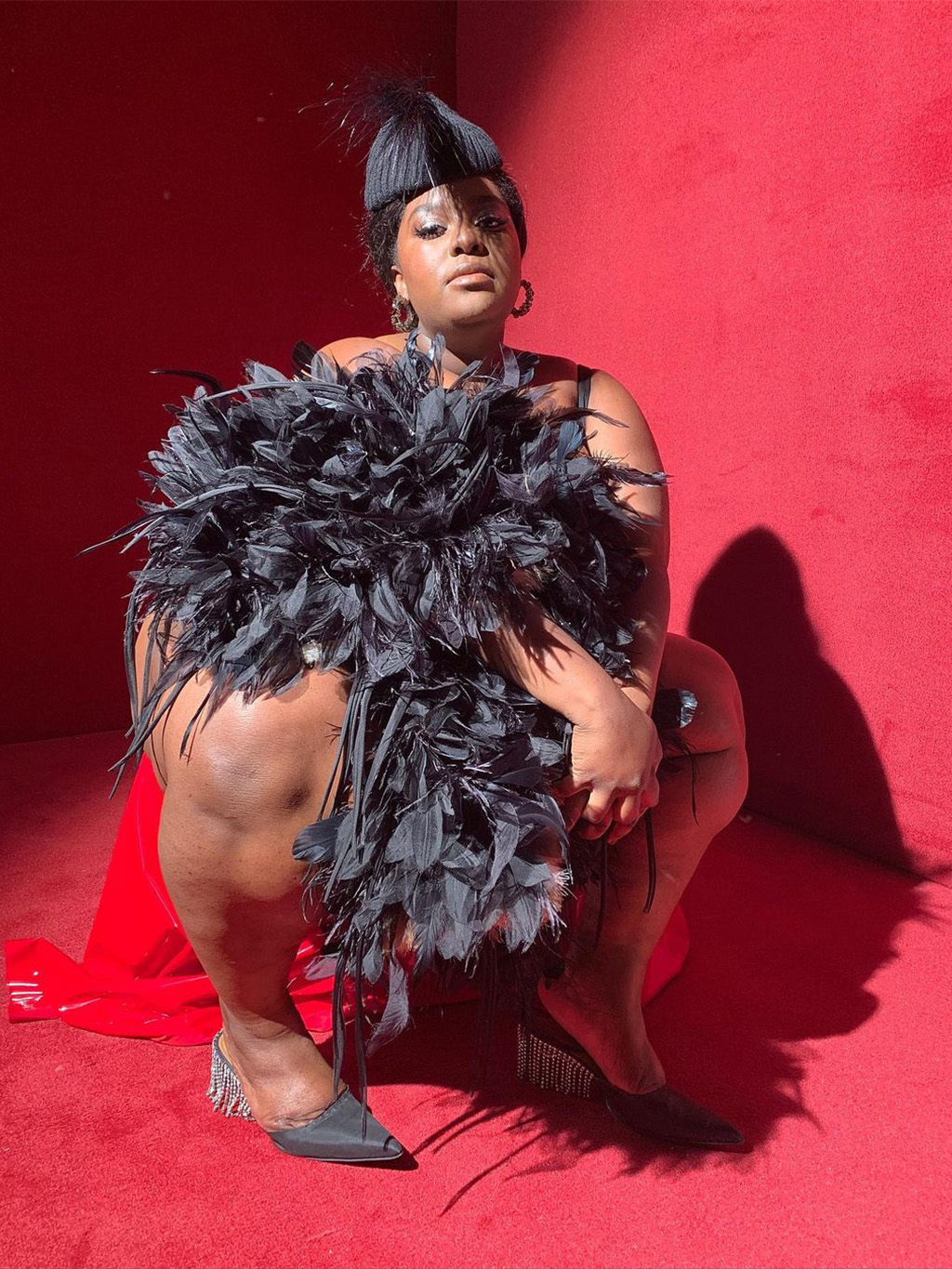
What has your experience been like?
LS: To be fully transparent, it’s been extremely draining and frustrating because as someone who physically looks like me in this industry, I’m constantly disrespected, used as a prop for diverse points, or underpaid.
What kind of impact do you hope your work has on the industry?
LS: Even though I constantly feel like I doubt myself, I know that I have already made an impact. I honestly think the campaign I had with Universal Standard opened some doors for "unconventionally attractive” bigger models after that. But I do think brands and companies should stop only booking us when they want 20,000 new followers and customers from the exploitation of bigger bodies.
How do you think the fashion industry can be more inclusive of all body shapes?
LS: High-end designers making inclusive collections without the bigger sizes only being a custom option, publications with alternative black and alternative fat black models on the cover and not just on one page, being the mood board and not just being on the mood board.
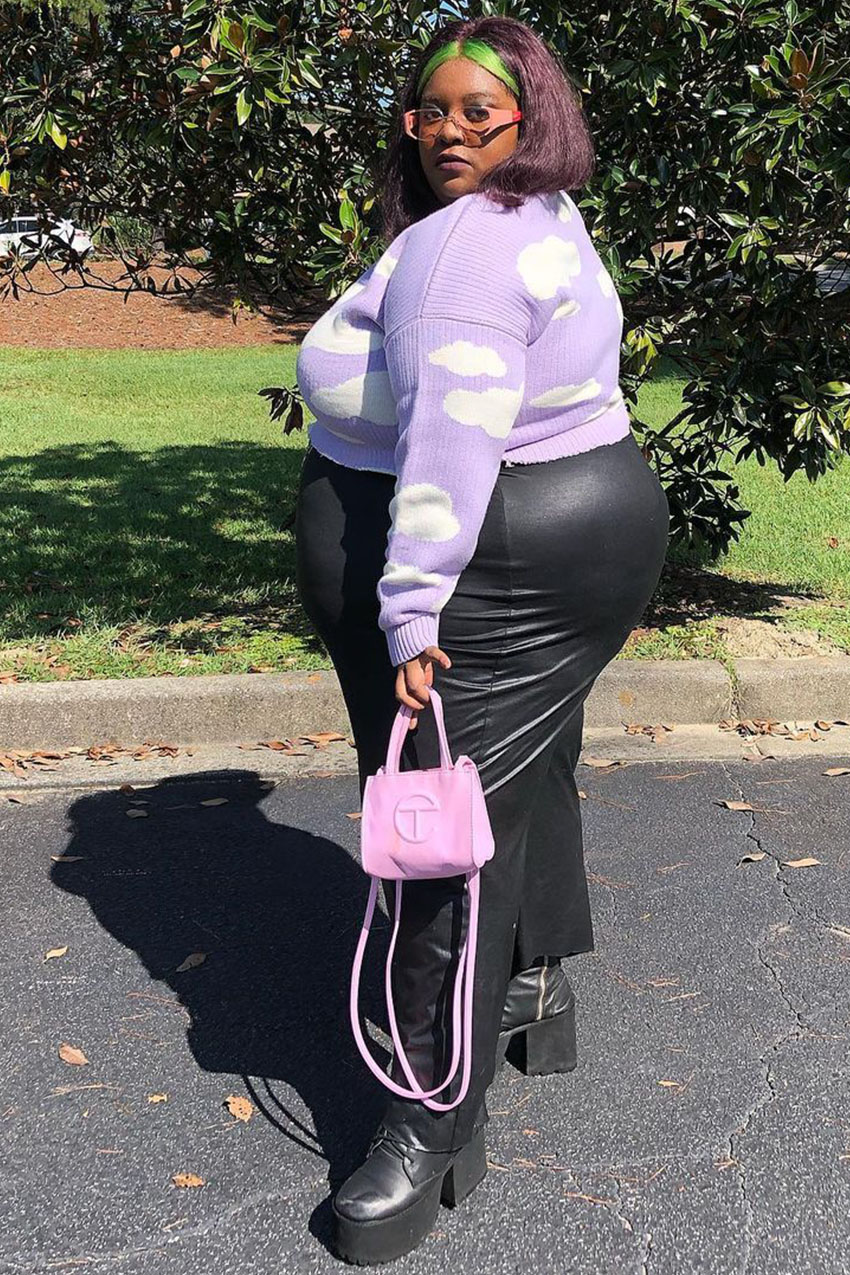
Why do you think body representation is important?
LS: There are little Black girls being picked on right now for being fat and black and automatically being deemed unworthy of all the good things in life. Constantly being told they’re too big and dark to get the love they seek or being told they’re not model material because they’re not thin or light. I was that little black girl and I’ll fight every day to be the girl I wish I saw in the media growing up.
What's one thing you wish would change when it comes to conversations around size inclusivity?
LS: More Black fat women at the front because we inspired the most in the body positive movement and yet people tend to steal our words and get away with it the second they slouch over and create the rolls I'm stuck with regardless of how I stand or sit. We’re left out of a lot of paid opportunities and aren’t allowed much room for growth too or to speak on how we are personally hurt over anything involving body politics and a lot of people won’t talk about that either.
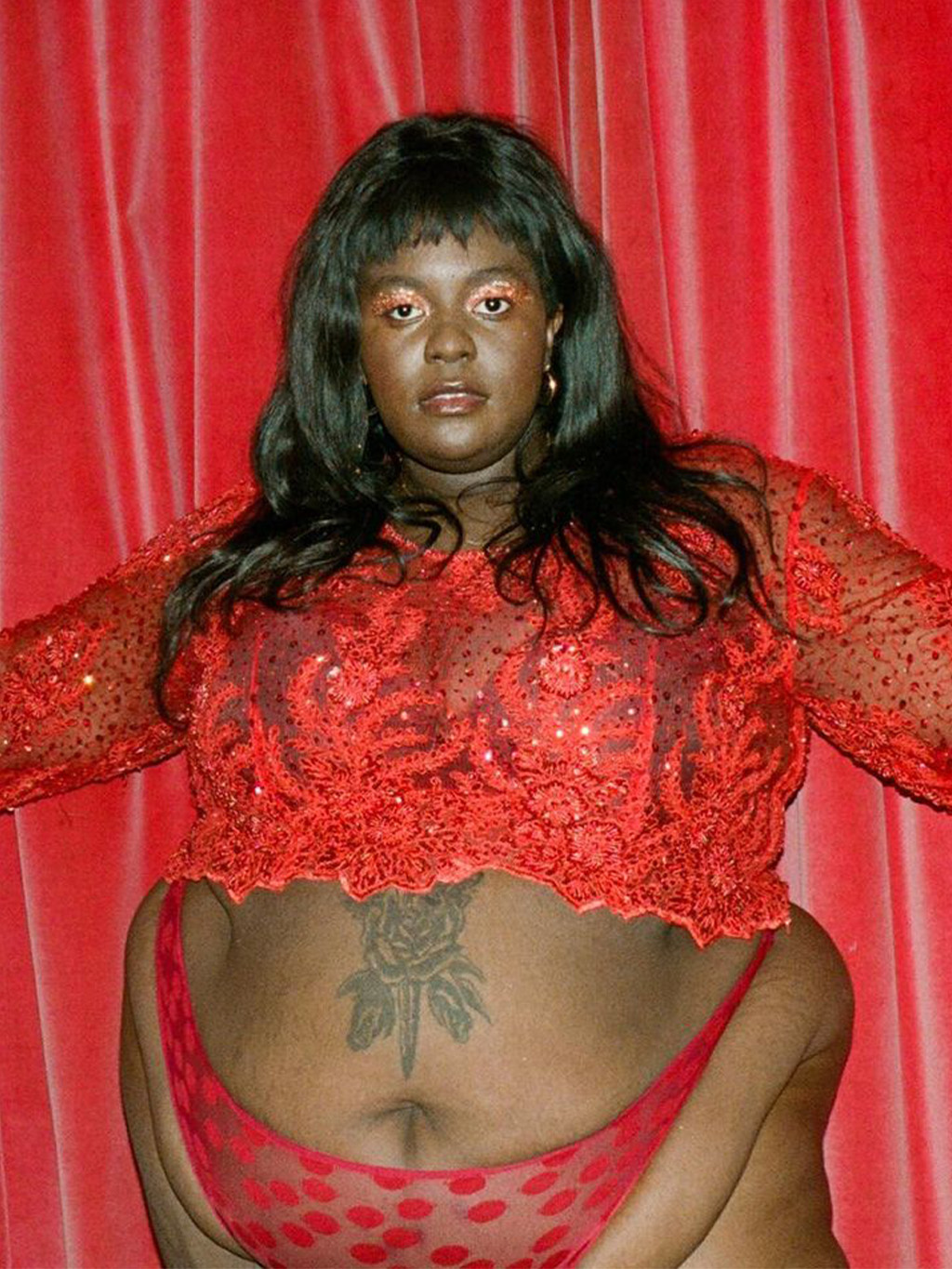
Describe your personal style. What are several pieces that define your wardrobe right now?
LS: Mixing high end with regular T-shirts and thrifted skirts. I love wearing oversize merch T-shirts with a cute skirt and my mini Telfar and calling it a day. My style is inspired by my favorite musicians but it's still very much my own.
Shop her style:
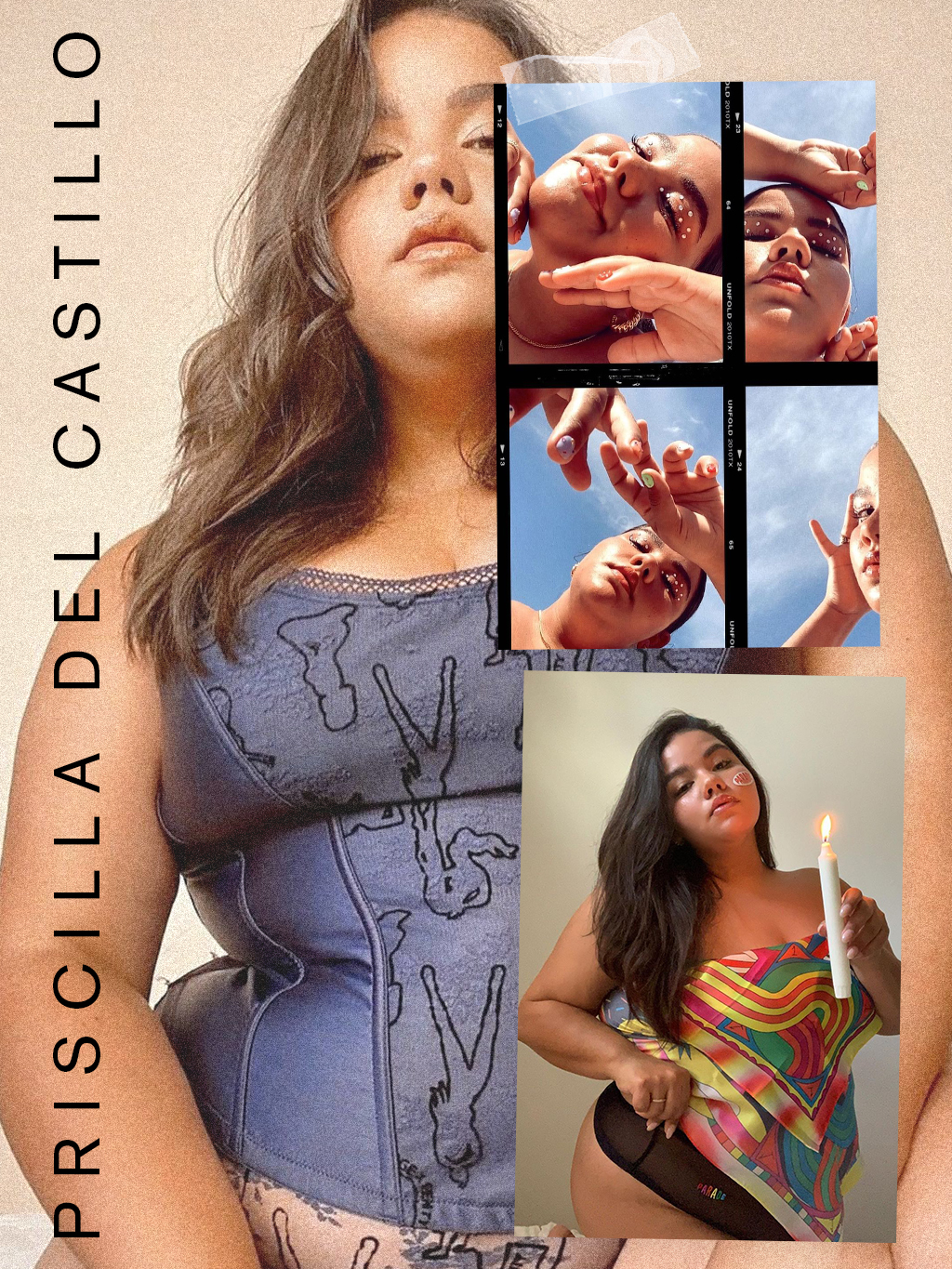
How long have you been modeling and how did you get into it?
PDC: I was in a Zumba Kellogg’s Video when I was 6, and ever since, I loved being in front of the camera! I took a pause to go to school then when I moved to New York 6 years ago I was lucky enough to be scouted by Refinery29 for a shoot and used those pictures to submit to real modeling agencies.
What have been some of your career highlights so far?
PDC: Booking Targets Swim Campaign last summer and booking a Samsung Billboard that was featured in Times Square.
What has your experience been like?
PDC: It’s a rollercoaster I’ve been all the way up in the clouds and all the down in the center of the earth's core (okay, maybe that’s a little harsh, haha).
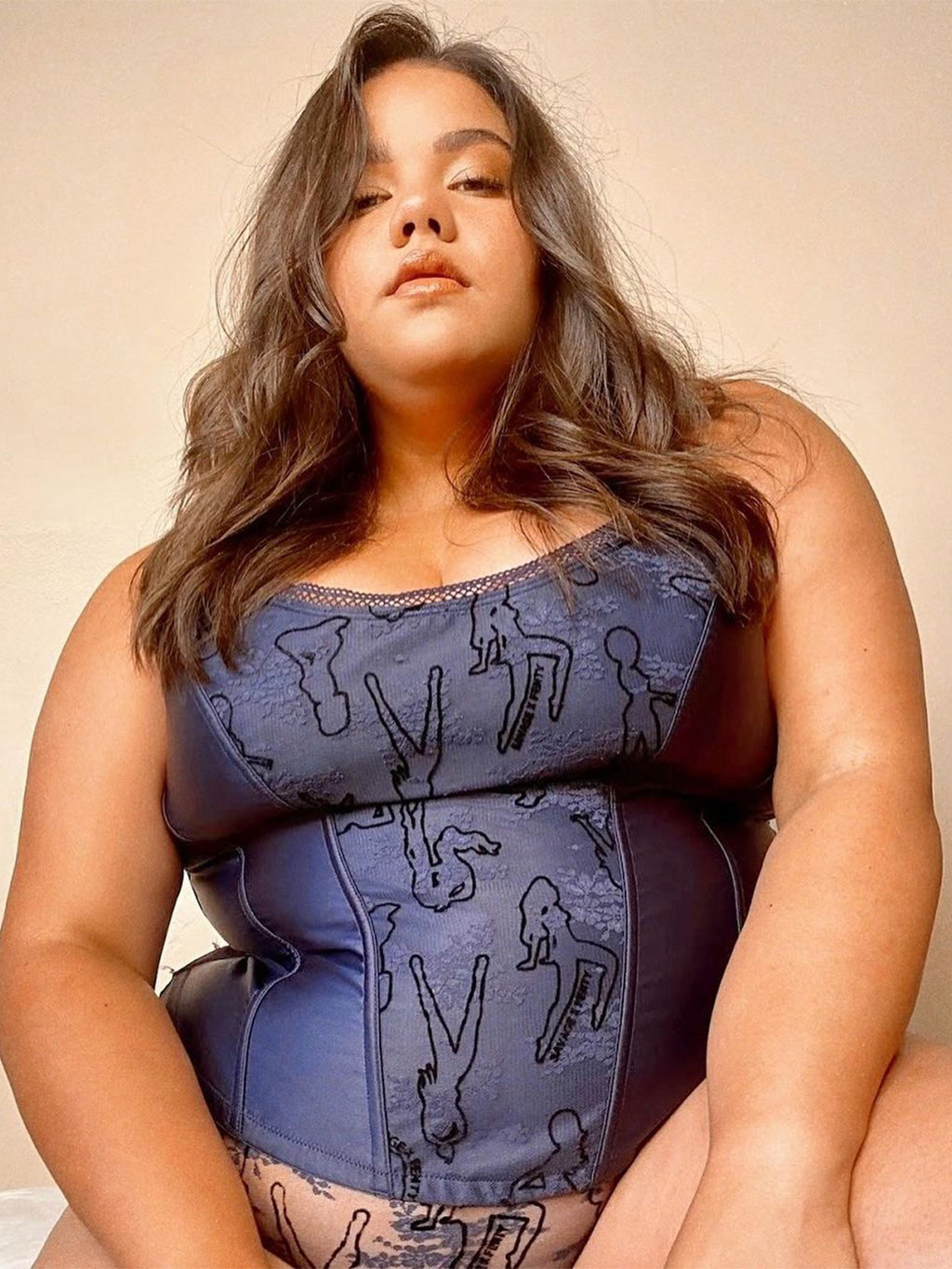
What kind of impact do you hope your work has on the industry?
PDC: I want to prevent people from giving up their lives by looking for a specific way that "society” doesn’t agree with. I want to break boundaries and make a huge impact on people's perspectives.
How do you think the fashion industry can be more inclusive of all body shapes?
PDC: Hire more women who look like REAL women and respect plus women on and off-set!
Why do you think body representation is important?
PDC: If we want to evolve as humans in this world we need to show the younger generation that there is not just one type of "body” out there. We need to break the mold.
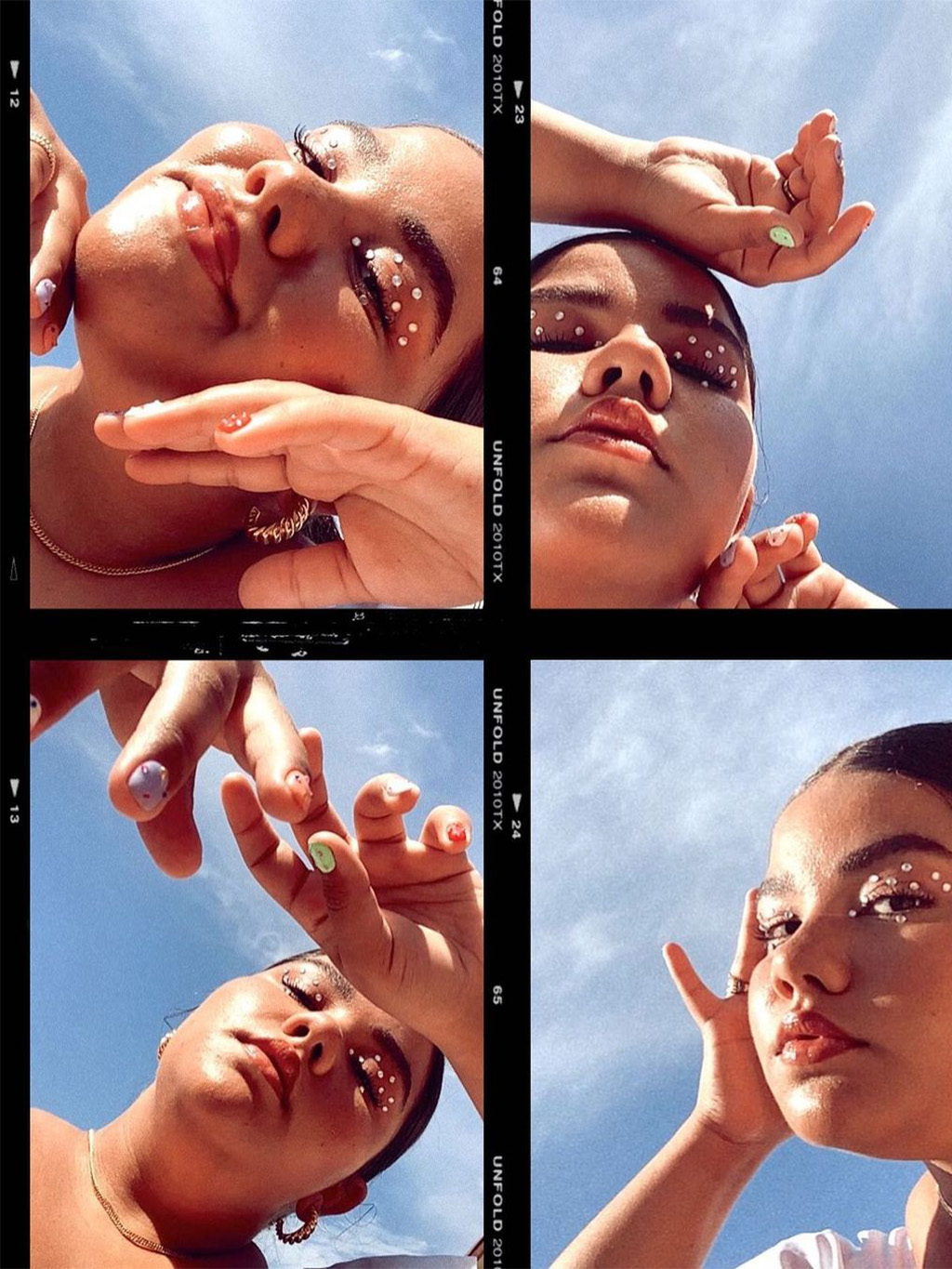
What's one thing you wish would change when it comes to conversations around size inclusivity?
PDC: I want to change the misconceptions people have when someone who’s a little thicker than the one before wears lingerie or a two-piece bikini and posts it on social media. I personally don’t understand how we always have to include the word "confidence” in every conversation about size. Why can’t we just say "sexy”? Is it because the person isn’t a size 2 and shouldn’t be wearing that lingerie?
Where do you love to shop? Are there any designers you love to wear?
PDC: I love the variety ASOS has for my size but I honestly love the staples I get from Target and Old Navy! Pretty Little Thing for my going out 'fits for sure and Nike for my casual wear. I wish there were a designer brand that had my size, but until then these are my staples.
Shop her style:
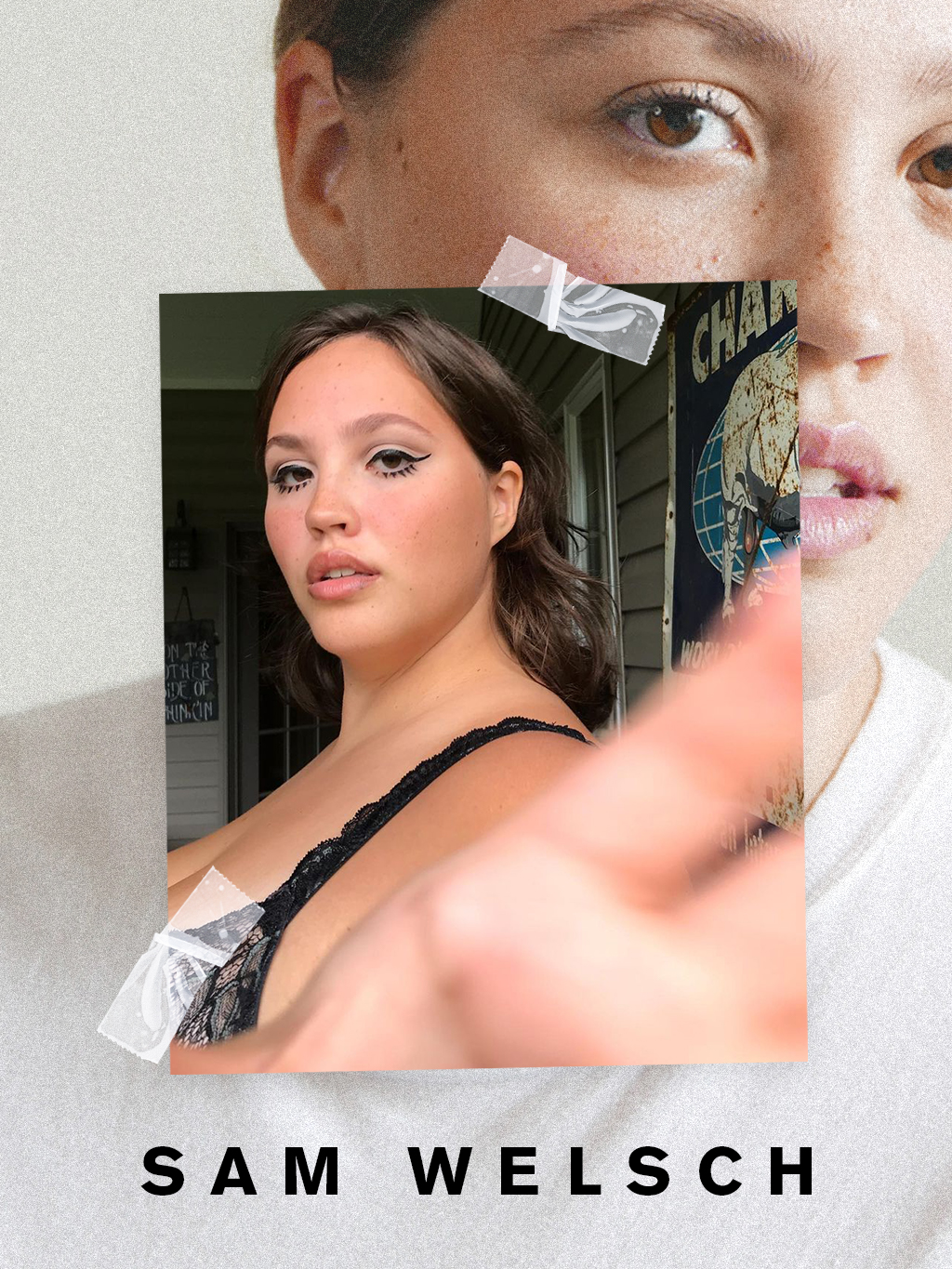
How long have you been modeling and how did you get into it?
SW: I have been modeling for about a year and a half now. I got into modeling by almost serendipity. I entered myself into an online Instagram casting for The Break’s Fall NYFW show in 2019, not really thinking much would come of it. Much to my surprise, I received a direct message from them saying that they’d selected me as one of the models to walk the show. I ended up going to my very first fitting, and then I walked the show the following week. It was an unbelievable experience, one I will never forget. From there, I received a message from my now agent, Jane Belfry, who had seen the press from the show, asking if I would like to sign with the Btwn. I immediately agreed, and I have been with them ever since.
What have been some of your career highlights so far?
SW: The moment I realized things were changing for me, and that this was serious, was when I booked a shoot with Savage x Fenty for their Halloween collection last year. Seeing myself on their Instagram page and website was affirming in so many ways. It was one of the first times I remember feeling truly sexy.
The next career highlight for me was booking Target for the first time but an even bigger moment came a few months after the shoot when I walked into Target and saw myself standing there, looking so proud and confident in a swimsuit. I remember going back home, sitting in my car, and just crying. I cried for the little girl in me because I know if she'd seen a woman like me when she was so self-conscious, she would’ve run around the pool flaunting that one piece like it was nobody's business. Things undoubtedly would have been very different for her.

What kind of impact do you hope your work has on the industry?
SW: I hope, if anything at all, I can help put a stop to this perpetuation that fat people are somehow undeserving of happiness and love. Growing up fat, I have felt so less than human more times that I can even conceivably count. I often felt that I was unworthy and that I would never find someone to love me unless I lost weight. Over the years, I have begun to loosen the grip that societal norms have had over my way of thinking. It really has in part been thanks to women in the industry I first saw who looked like me. If it weren’t for girls like Nadia Aboulhosun, or Gabi Fresh, I would have never felt like I saw myself. I hope to be that for other people struggling with their identity, to be seen and heard, and listened to.
How do you think the fashion industry can be more inclusive of all body shapes?
SW: I think that the main thing that the fashion industry can do to be more accessible and inclusive of all body shapes is to listen, and implement. We are telling them exactly what we want, and more importantly, what we need. Now all the fashion industry needs to do is to show up.
Hearing from people who follow me online has been so wonderful and surreal. To know that I have helped someone else see themselves as worthy and beautiful means everything to me. It is the reason I do any of it, the possibility for someone to see that in themselves is worth all of it.
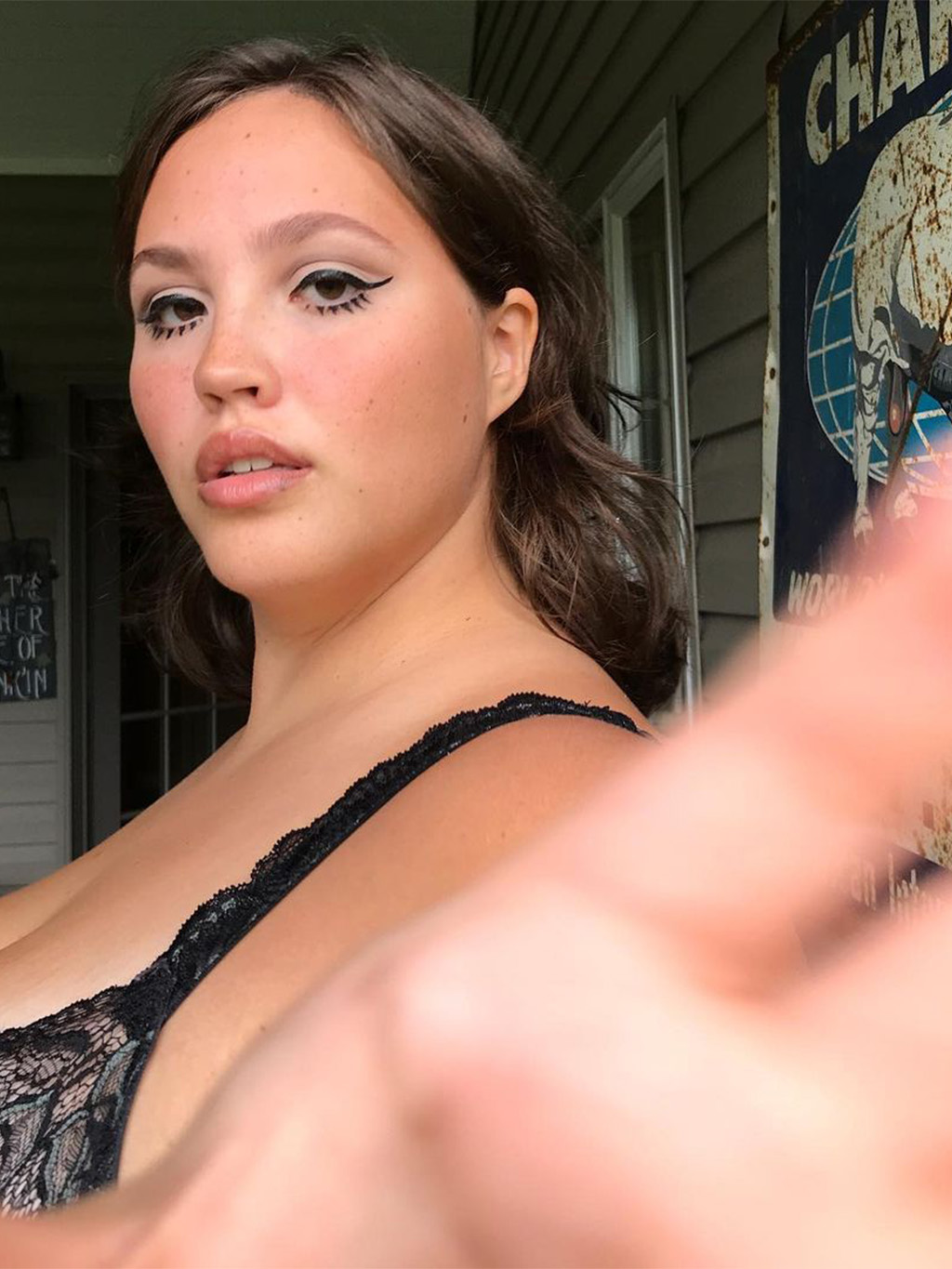
Why do you think body representation is important?
SW: Body representation is important because it shows us what is possible. It is so important to feel a sense of belonging, and when our bodies are not represented, that invites exclusion and isolation. Body representation shows people that there are others like them, that we are in fact not alone. It shows that success and joy and abundance is within everyone’s reach, no matter your appearance.
What's one thing you wish would change when it comes to conversations around size inclusivity?
SW: I wish that when it comes to conversations around size inclusivity, we actually included all sizes. Currently, the highest that most "size-inclusive” brands go up to, is usually a US size 16 or 18. That to me is unacceptable. I do not feel that brands should be allowed to slap that moniker on their clothing unless they are truly size-inclusive. I also think that often, when brands do jump to extending their sizing, they usually do not consider what that would even look like. I’m not saying that extended sizing isn’t the right step, but the next step after that is to actually prototype what that extended sizing then looks like on a larger body. I have bought clothing in my size that either ends up looking like a sack of flour or barely covering my torso, simply because the company was too lazy to do size grading testing on real-life women.
Where do you love to shop? Are there any designers you love to wear?
SW: The pieces that define my wardrobe right now are my gold Mejuri hoops and my black flare jeans from Warp + Weft. Gold anything really, I feel it captures the mood of any season perfectly, you can go from summer to fall wearing the same gold hoops, and they still fit so effortlessly.
I’m not huge into designer-wear, but I do love everything Tamara Malas. She is an absolute queen for us plus-size babies. Her clothing is high-fashion, unique, and makes you feel so special.
Shop her style:
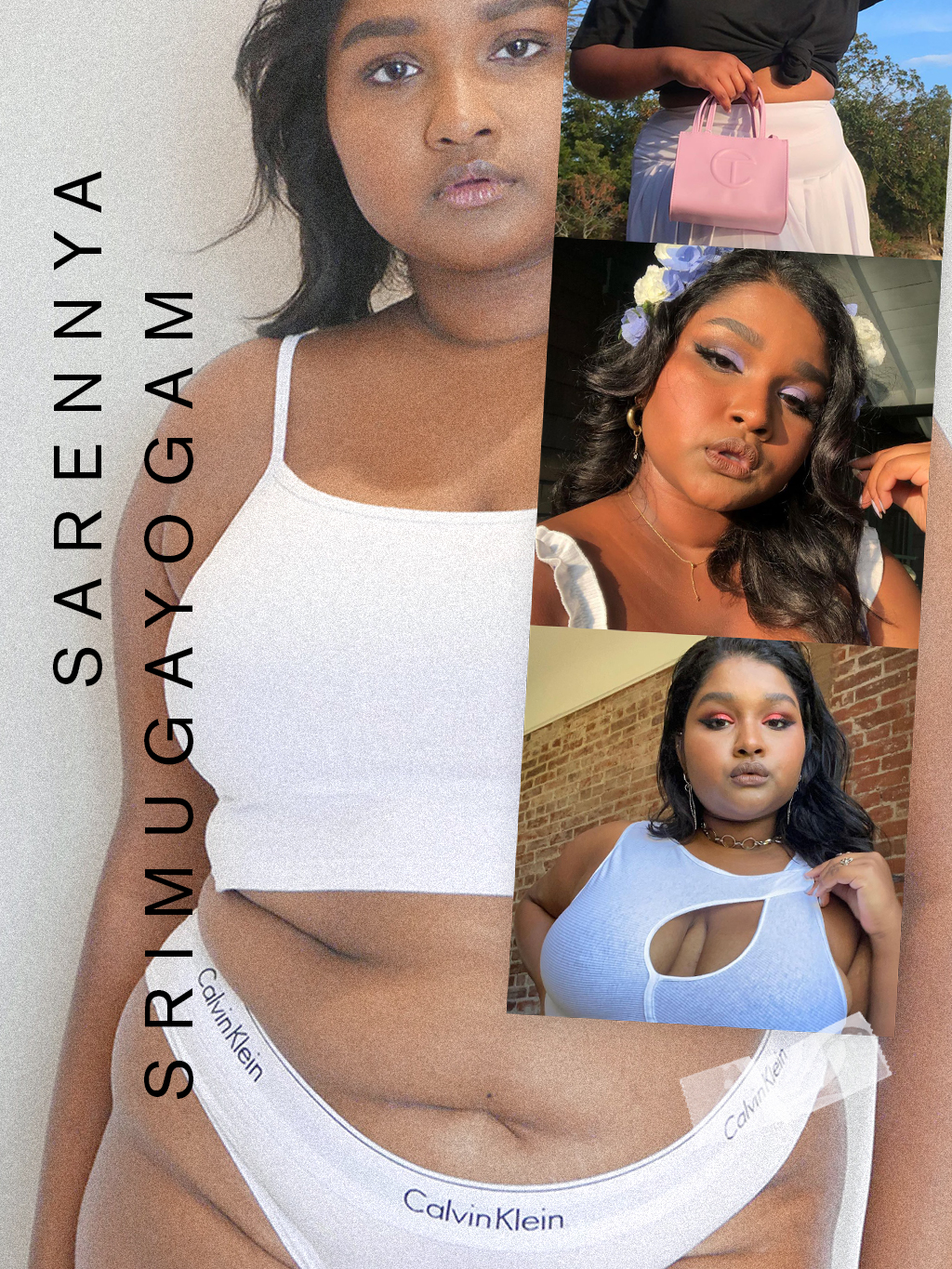
How long have you been modeling and how did you get into it?
SS: I have been modeling for about a year and a half in a professional capacity. I got into modeling from my time in university working with other artists, designers, and photographers. I was incredibly inspired within my own work to be the visual representation I wish I had seen as a young girl, and because I wasn’t seeing it produced by other people, I sought to make it myself.
What have been some of your career highlights so far?
S: I’ve had the privilege of working with so many talented creatives but a personal highlight has to be working on the Target Swim 2020 campaign which made headlines for being so inclusive. That was the biggest set I had worked on and it was so incredibly fun! Getting to model swimwear is something I never believed I would be given the opportunity to do, and especially not at this large of a scale. Adding ‘swimsuit model’ to my resume makes my younger self giddy. Another highlight was definitely walking for the SKIMS show during NYFW, it was a surreal experience and one I will never forget. The energy of NYFW- there’s just nothing like it and standing alongside models who have been my inspiration for so long was a dream come true.
What kind of impact do you hope your work has on the industry?
S: I hope to continue to create art and be a voice for people who didn’t see themselves and their intersecting identities represented in art and media. I hope to show them that there is a place for them in the art world, in the fashion world, in the beauty world and that I can be instrumental in creating change and pushing boundaries for more inclusivity.
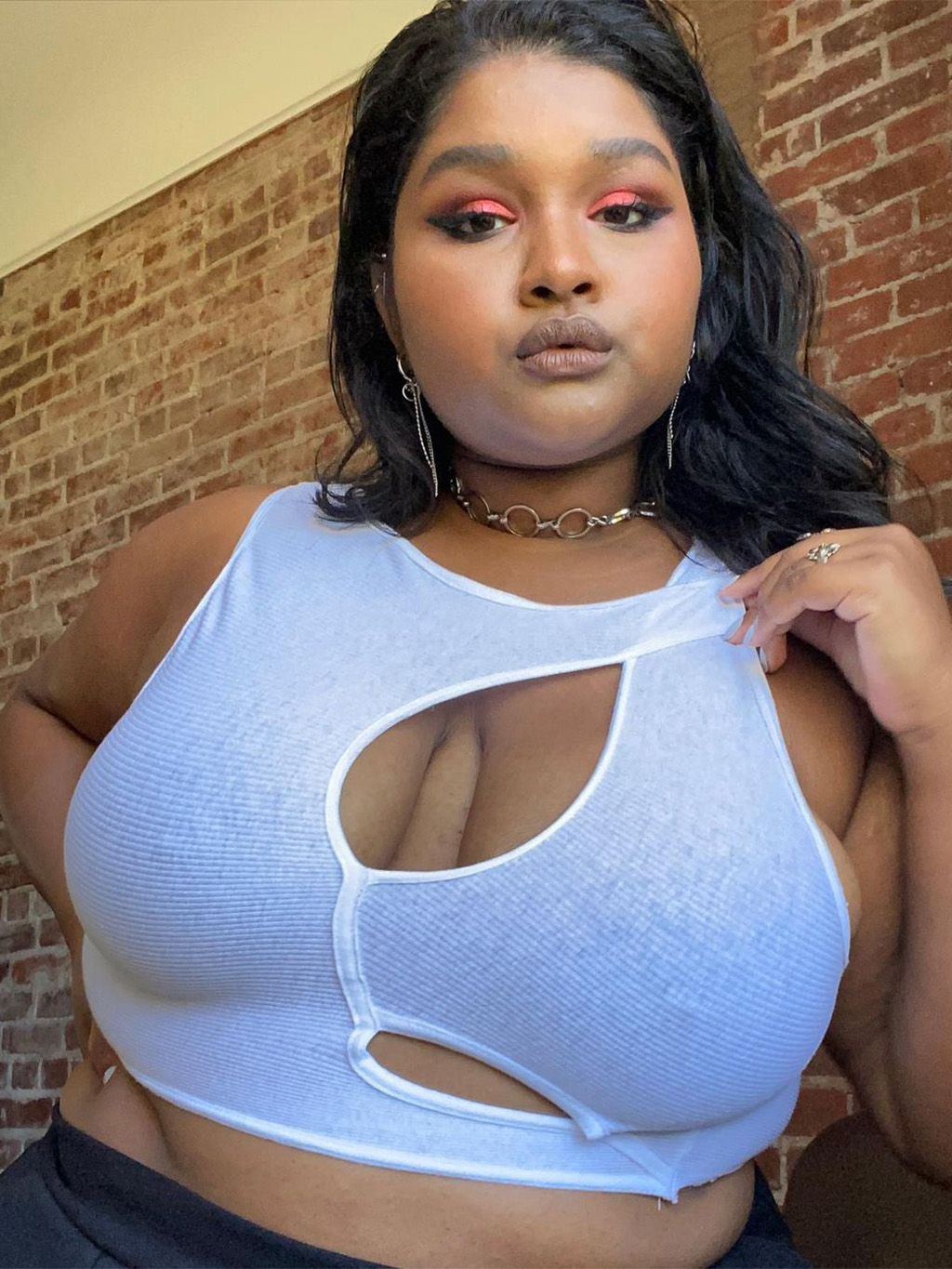
How do you think the fashion industry can be more inclusive of all body shapes? What do you see as the future of fashion?
S: The future of fashion has to be inclusive, sustainable, and accessible. I think the fashion world should take the feedback that people want to see larger size ranges. There is so much gatekeeping to ‘high fashion’ that is really not going to help those brands continue to thrive in the future especially as most people don’t fit into sample size zeros! There are so many people who are also pushing for more sustainable practices in fashion and unfortunately, there are so many plus-sized people who aren’t able to access these brands. Plus-size people are supposed to be happy with the two extended-sizing options we are given but unfortunately aren’t afforded the thoughtful, innovative, and fun designs that are reserved for straight-sized people.
Why do you think body representation is important?
S: I think body representation is so important to people’s self-esteem and self-love. This is so much of how I learned to love myself. In a world where we’re sold that thin, white bodies are the epitome of beauty, it can be hard to find love for bodies that diverge from this ideal especially if they are hidden from us.
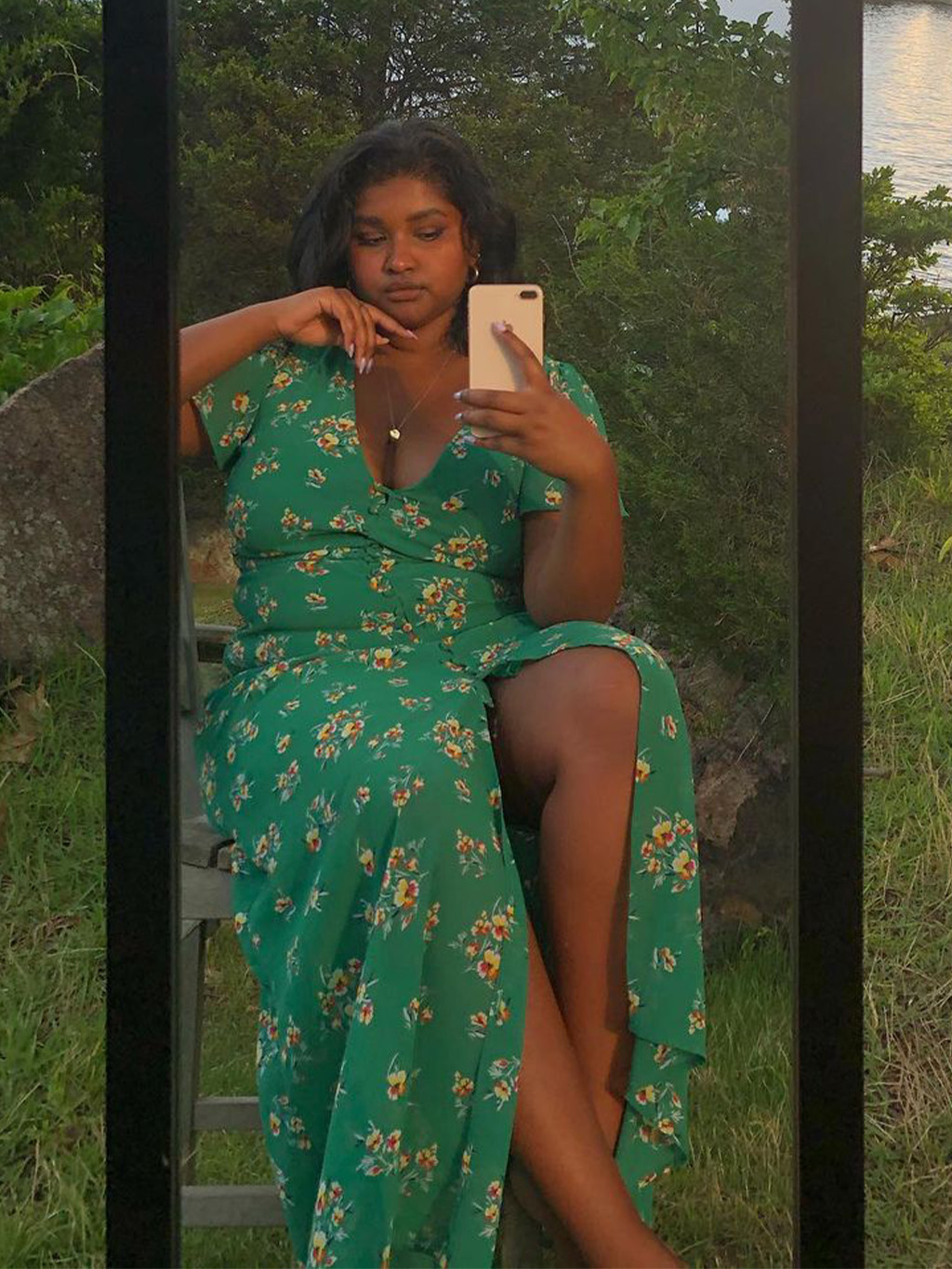
What's one thing you wish would change when it comes to conversations around size inclusivity?
S: I think I would like to change people’s concept that a brand has the option of being size inclusive or not. All brands should be size-inclusive from day one, period. Advocating for companies to design beautiful clothing for plus-sized people and to expand their size ranges is one way to be an ally for this community.
Describe your personal style. What are several pieces that define your wardrobe right now?
S: My personal style could be summarised in three words; whimsical, feminine, and colorful! I have a floor-length, tiered, ruffled white skirt that makes me feel like a nymph walking through the forest whenever I put it on. I have several ribbed bodycon tops in pastel colors that are a staple in my wardrobe throughout the year, they really go with so many outfits. A silk ruched slip dress in pinks yellows and greens that make me feel like I’m wearing a sherbet ice-cream on a hot summer's day. For the winter months, I have a fire engine red puffer coat that I thrifted, which brightens my day, especially when the winter uniform can be so dull and monochromatic.
Shop her style:
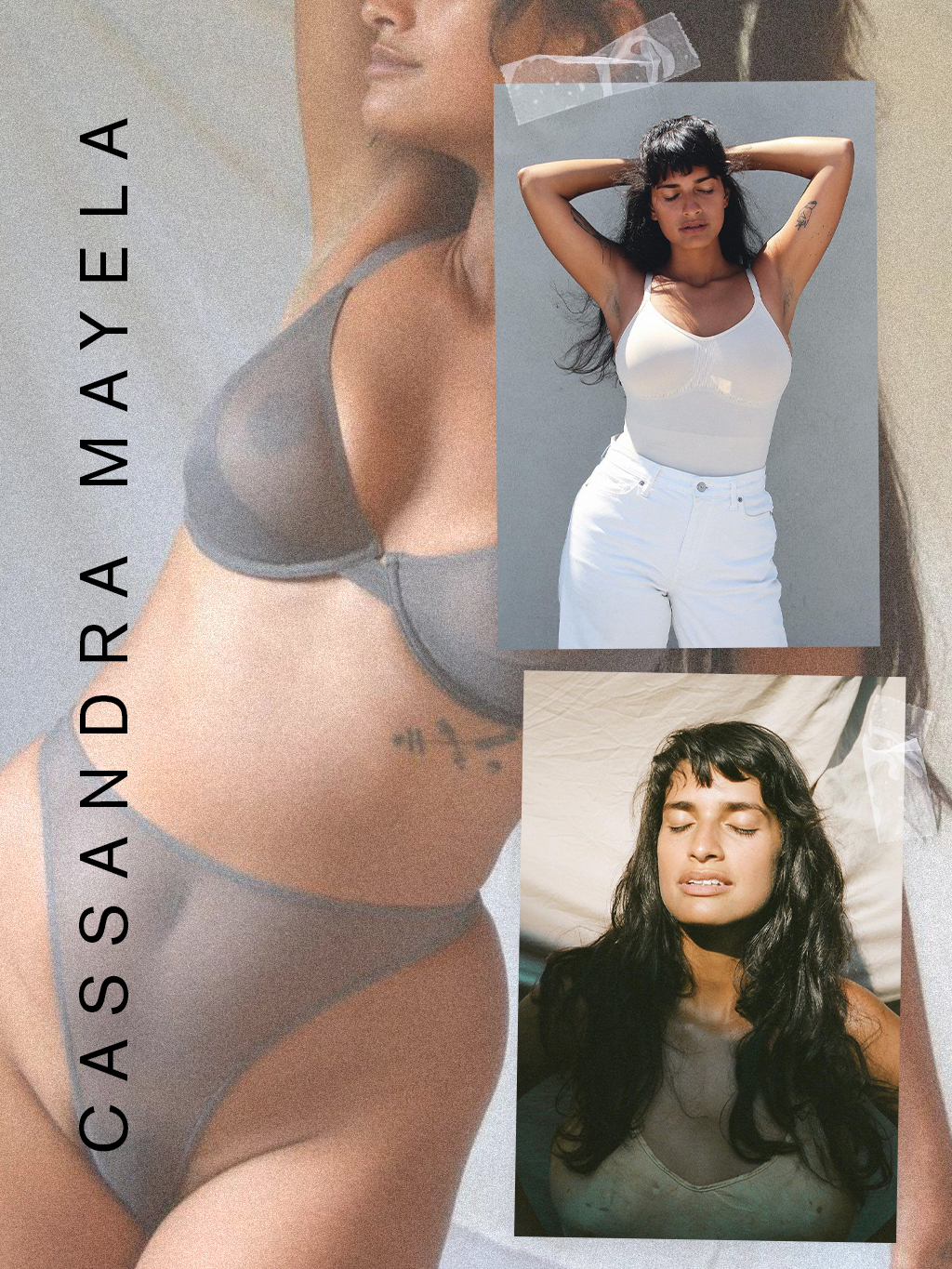
How long have you been modeling and how did you get into it?
CM: I started by posing for friends and just for fun and it organically evolved into something more serious and constant. I think that evolution happened
about 3 years ago.
What have been some of your career highlights so far?
CM: I'm just really happy about the flexibility of this kind of work and how it allows me to focus and develop my artistic practice.
What has your experience been like?
CM: I’ve had a positive experience. I appreciate getting casted for being myself without having to change in order to fit any other expectations. I don't think I'd be able to do it if I had to compromise myself in order to participate. I can't do anything that doesn't feel genuine.
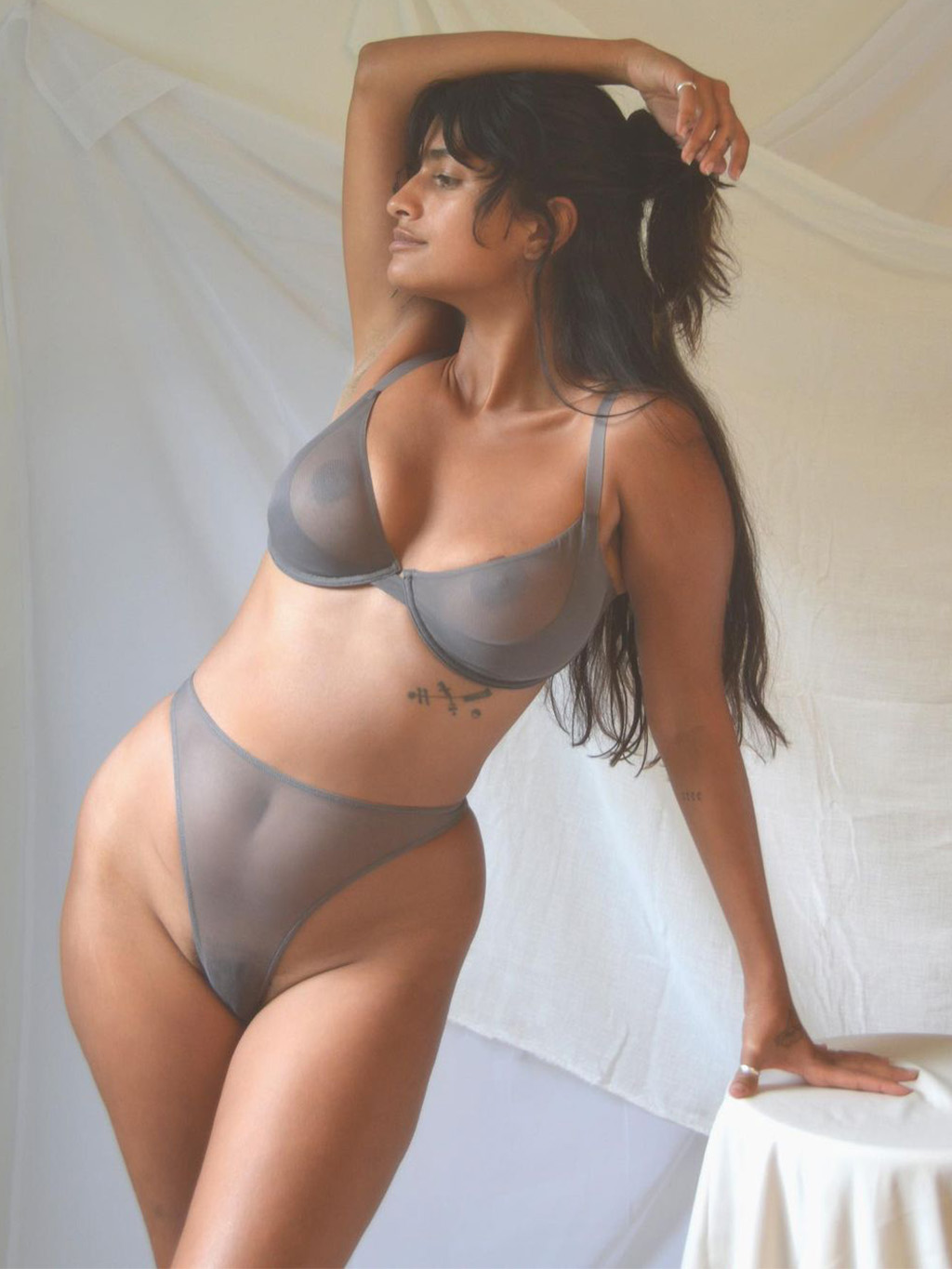
How do you think the fashion industry can be more inclusive of all body shapes?
CM: Well, I think it's inclusivity is happening in front of the lens more and more each day, and that is definitely exciting, but I feel it's equally important to see it behind the lens as well. I feel there's a lot of talented and capable people who deserve a spot as well.
Why do you think body representation is important?
CM: It's important because in such a visual society like the one we live in nowadays, representation is education.
Describe your personal style. What are several pieces that define your wardrobe right now?
CM: For me, it's comfort over looks tbh! Now that's getting cold I'm rocking cozy, chunky layers, hats, sweatpants, textures of wool and corduroy, and combining it with some nice sneakers or boots. One of my favorite things to wear is sweatpants with cowboy boots.
Where do you love to shop? Are there any designers you love to wear?
CM: I'm the worst consumer, haha! I’ve grown to be very self-conscious of fabric waste and no longer participate in fads. If I buy something it will last. I like to make my own clothes, support independent designers, and get a few vintage pieces here and there. I'm very much into shoes though, as someone who (usually) is on her feet a lot, I prioritize my shoe collection.
Shop her style:
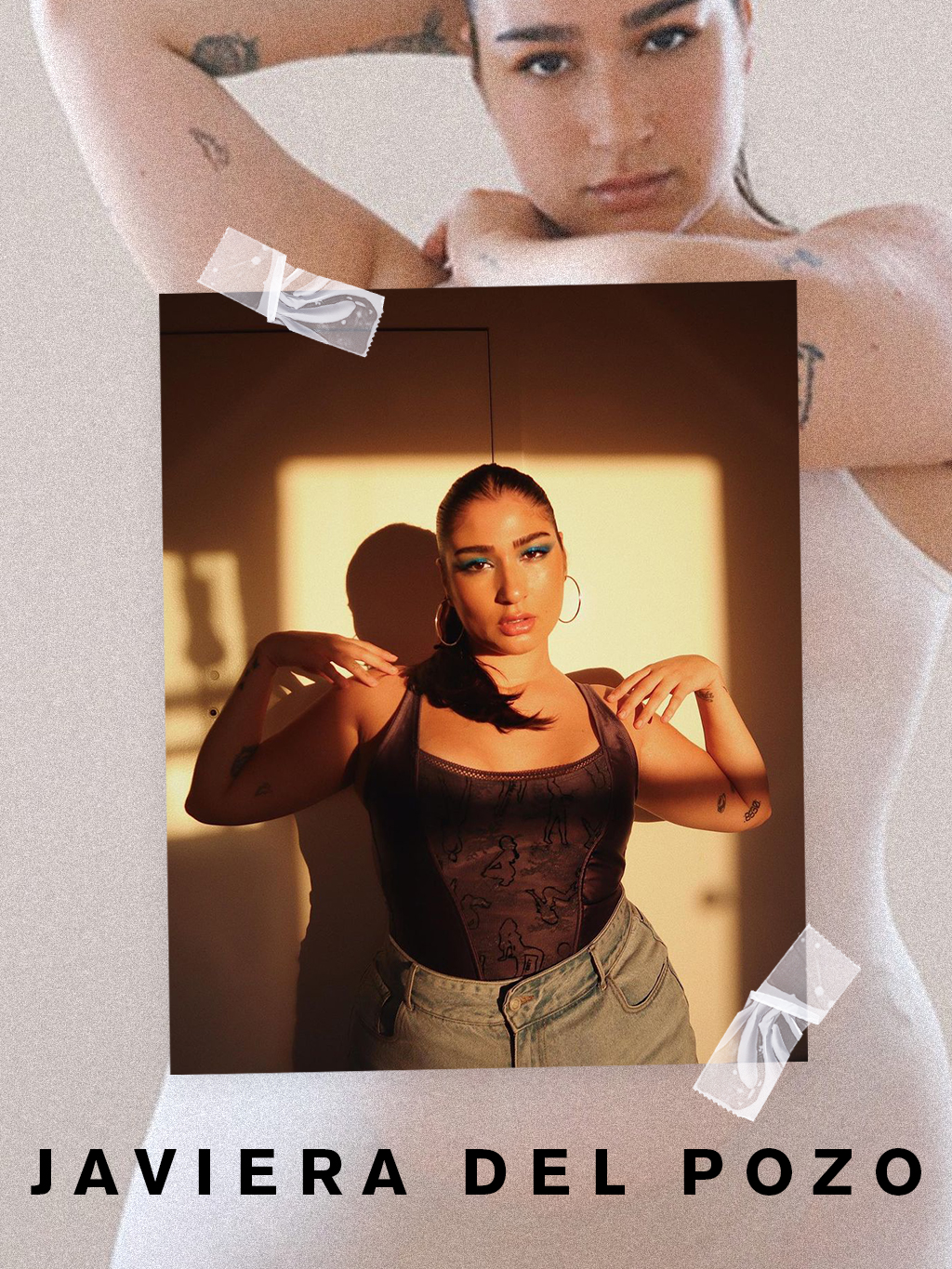
How long have you been modeling and how did you get into it?
JDP: I have only been signed for a little over a year, however, I've been doing it for about 3 years. Social media was a huge help with getting comfortable in front of the camera and now it all comes very naturally to me. Modeling has definitely amplified my confidence and creativeness.
What have been some of your career highlights so far?
JDP: Over the summer I was on Teen Vogue; it was an absolute dream because I used to get that magazine in the mail every month when I was a teen. It all came full circle! I also have had features on Marie Claire, as well as Alfombra Roja, which is a very popular online magazine in Chile where I am from. It still amazes me that my presence carries over to my hometown.
What kind of impact do you hope your work has on the industry?
JDP: What drives me most is knowing my unique features are being seen by the public. Growing up I knew I was not the "beauty standard," I still am not, but I've learned to love that. Hopefully, younger girls can see that they don't need to look a certain way to feel beautiful and valid in their bodies.
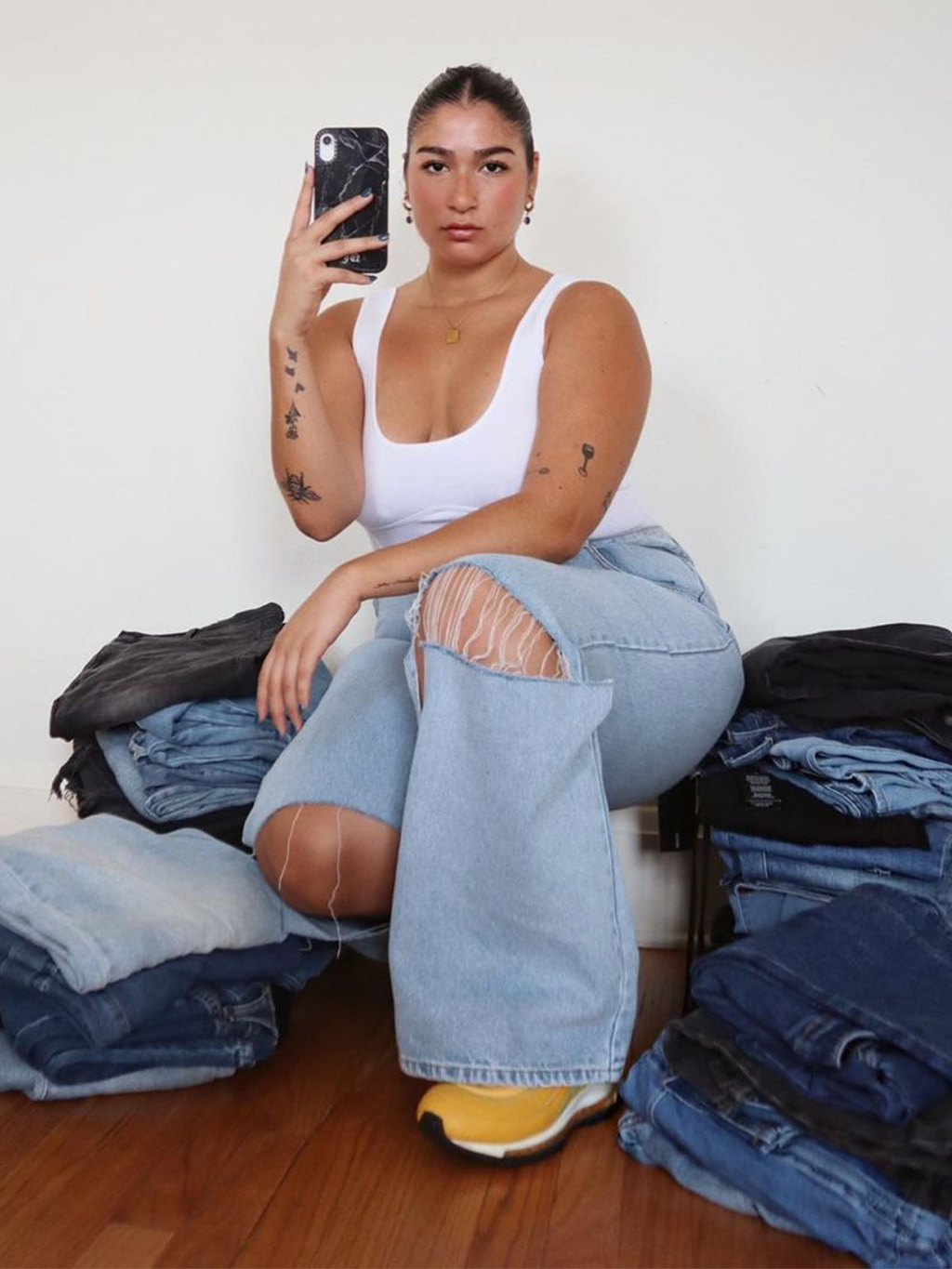
How do you think the fashion industry can be more inclusive of all body shapes?
JDP: One of the main problems I have encountered is plus sizes being overlooked completely in the design process, campaigns, and styling in-studio. I'm hoping we see more brands immediately incorporating plus sizes in their collections and not have them be an afterthought when the consumer asks for it. I think the more we instill these practices within the fashion industry, the more inclusive it will become.
Why do you think body representation is important?
JDP: Body representation is so important because people deserve to feel good, represented, and seen. No matter what the beauty standard is, your body is valid and worthy of respect. I would have had less trouble loving myself growing up if the industry was as progressive as it is now. I definitely have a lot of faith that we will get to a place where everyone feels represented.
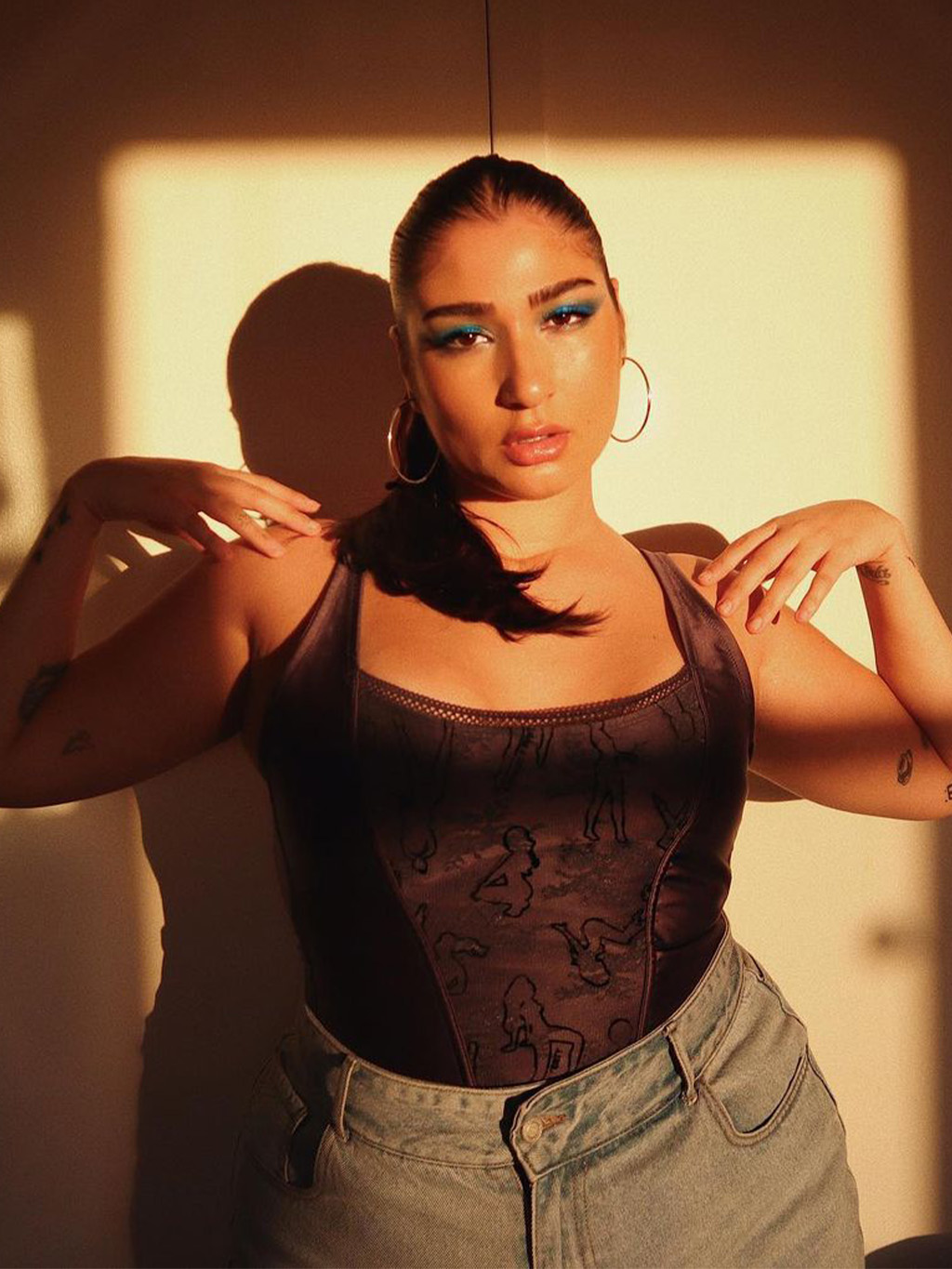
What's one thing you wish would change when it comes to conversations around size inclusivity?
JDP: For the most part, I have seen discomfort from people not knowing how to maneuver a conversation on size inclusivity. As I mentioned, the more we speak on the issue, the more normalized it gets. Talking about size shouldn't feel so taboo, but that is because society made us think our size equates to the love we should have for ourselves. Listen to your peers, models, etc when they think something is not right. It's already hard speaking up when you're the only plus-size model in the room, so let them share their experiences.
Describe your personal style. What are several pieces that define your wardrobe right now?
JDP: My personal style has always been very neutral, a little chic, and comfy street style. I've been loving relaxed fit denim, turtlenecks, oversize jackets, and can't forget the sneakers. I have always been told to only wear things that "flatter" my curves, but I've decided to challenge that and wear the complete opposite. It has given me a newfound confidence.
Shop her style:
Next: 6 Models on Abelism, Visibility, and Personal Style
Anna is an NYC-based senior fashion editor who has been a member of the Who What Wear team for over seven years, having begun her career in L.A. at brands like Michael Kors and A.L.C. As an editor, she has earned a reputation for her coverage of breaking trends, emerging brands, luxury shopping curations, fashion features, and more. Anna has penned a number Who What Wear cover interviews, including Megan Fox, Julia Garner, and Lilly Collins. She also leads the site’s emerging travel vertical that highlights all things travel and lifestyle through a fashion-person lens.
-
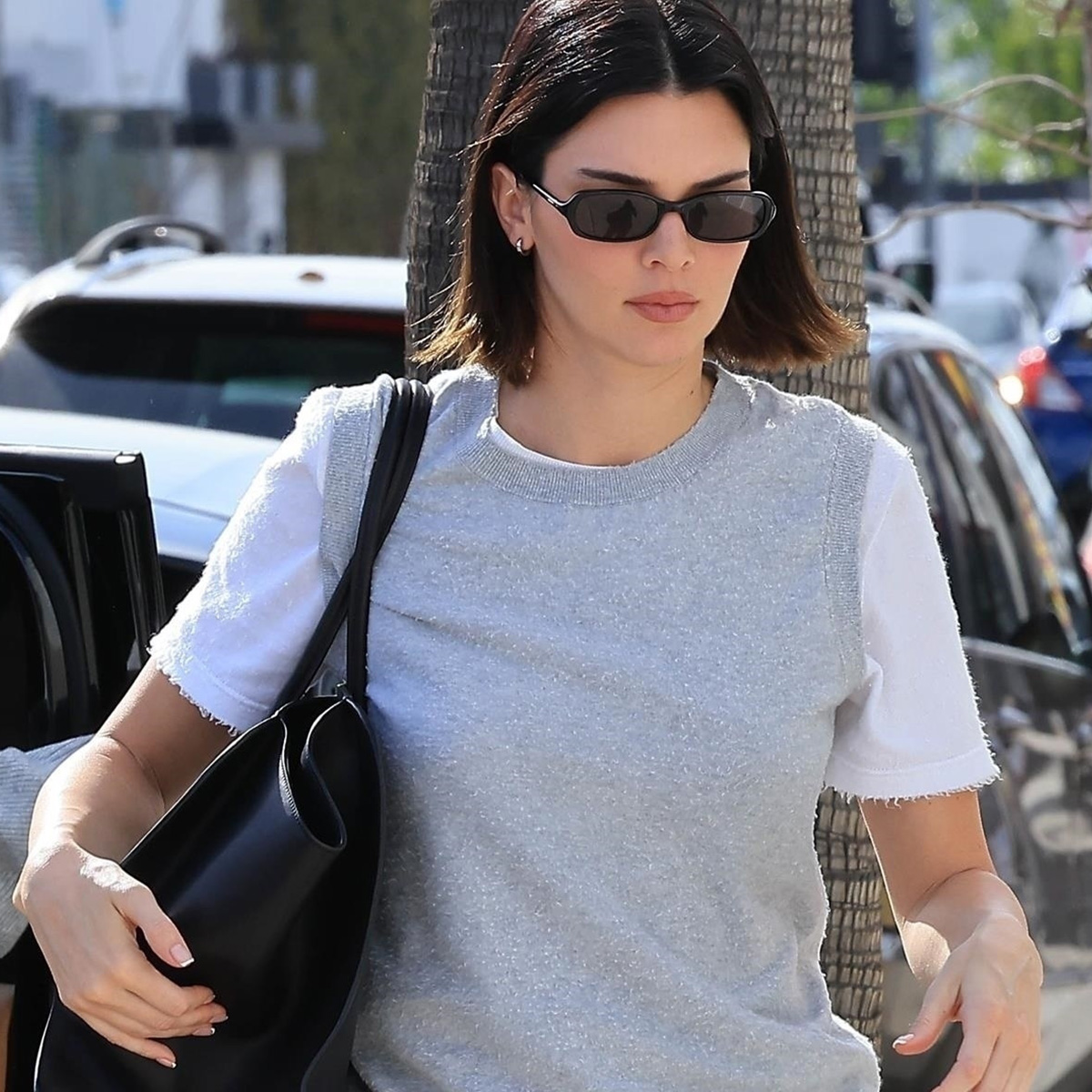 Spotted on the Streets of L.A.: The Chicest Shoe Trend to Wear With Black Trousers
Spotted on the Streets of L.A.: The Chicest Shoe Trend to Wear With Black TrousersSorry, sneakers—it's not your time.
By Eliza Huber
-
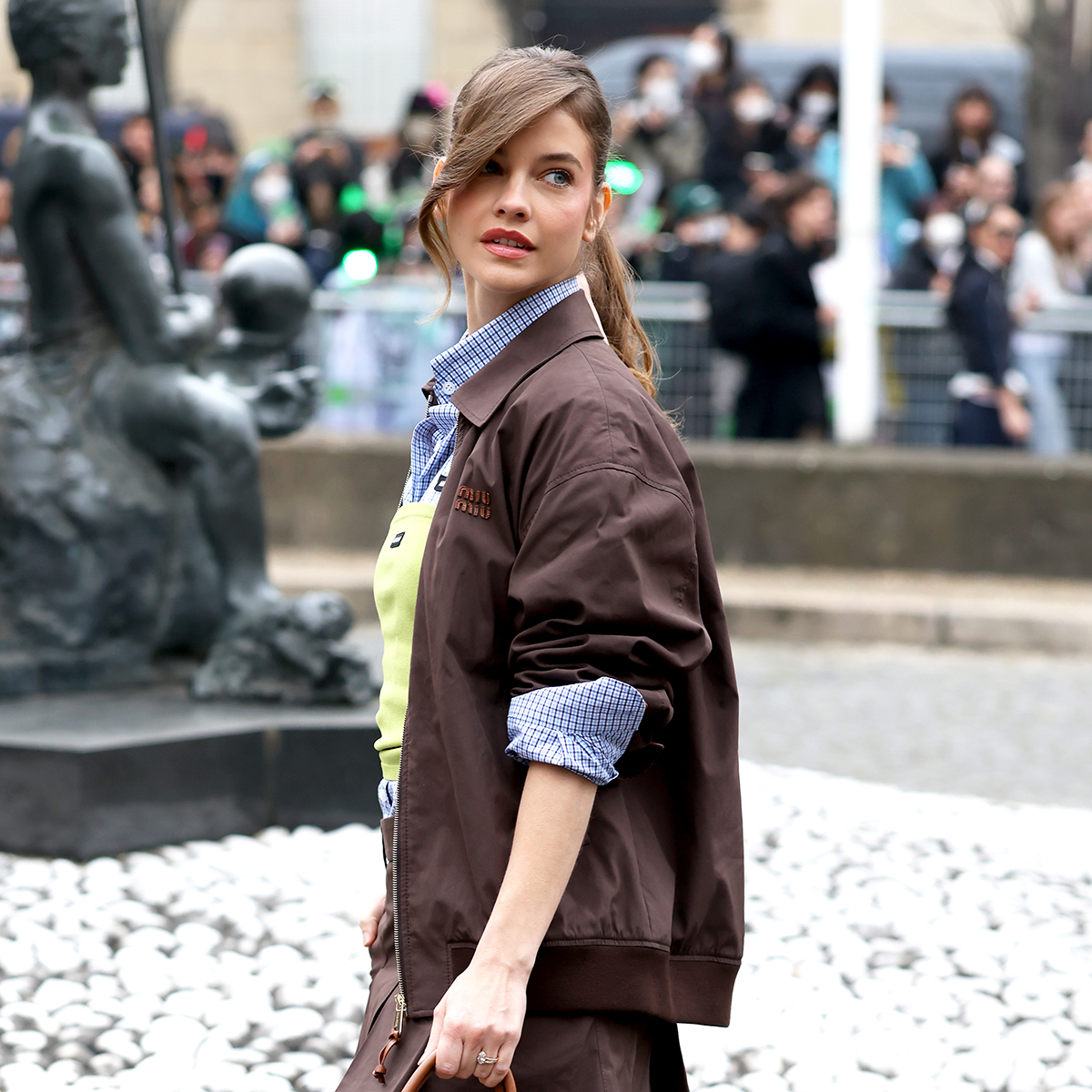 I'm Calling It: This Is How People With Cool Style Will Wear Button-Down Shirts in 2025
I'm Calling It: This Is How People With Cool Style Will Wear Button-Down Shirts in 2025As seen in Paris.
By Allyson Payer
-
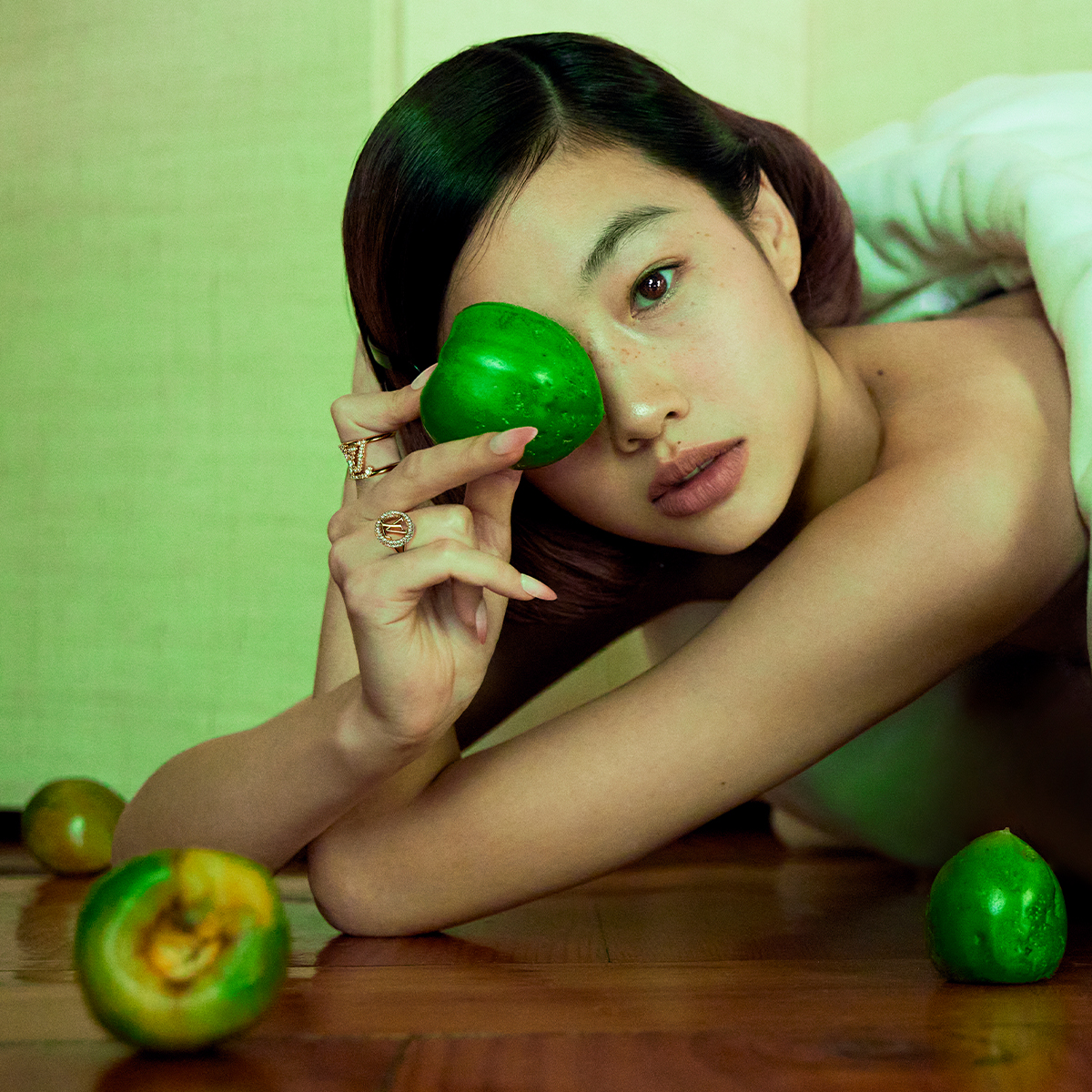 Hoyeon on Top: From Major Model to Ascending Actress, the Artist Is Unstoppable
Hoyeon on Top: From Major Model to Ascending Actress, the Artist Is UnstoppableClick through to read our October cover story.
By Jessica Baker
-
 Amelia Gray Is Already Wearing the Pretty 2025 Color Trend Everyone's Discussing
Amelia Gray Is Already Wearing the Pretty 2025 Color Trend Everyone's DiscussingNo time to waste.
By Allyson Payer
-
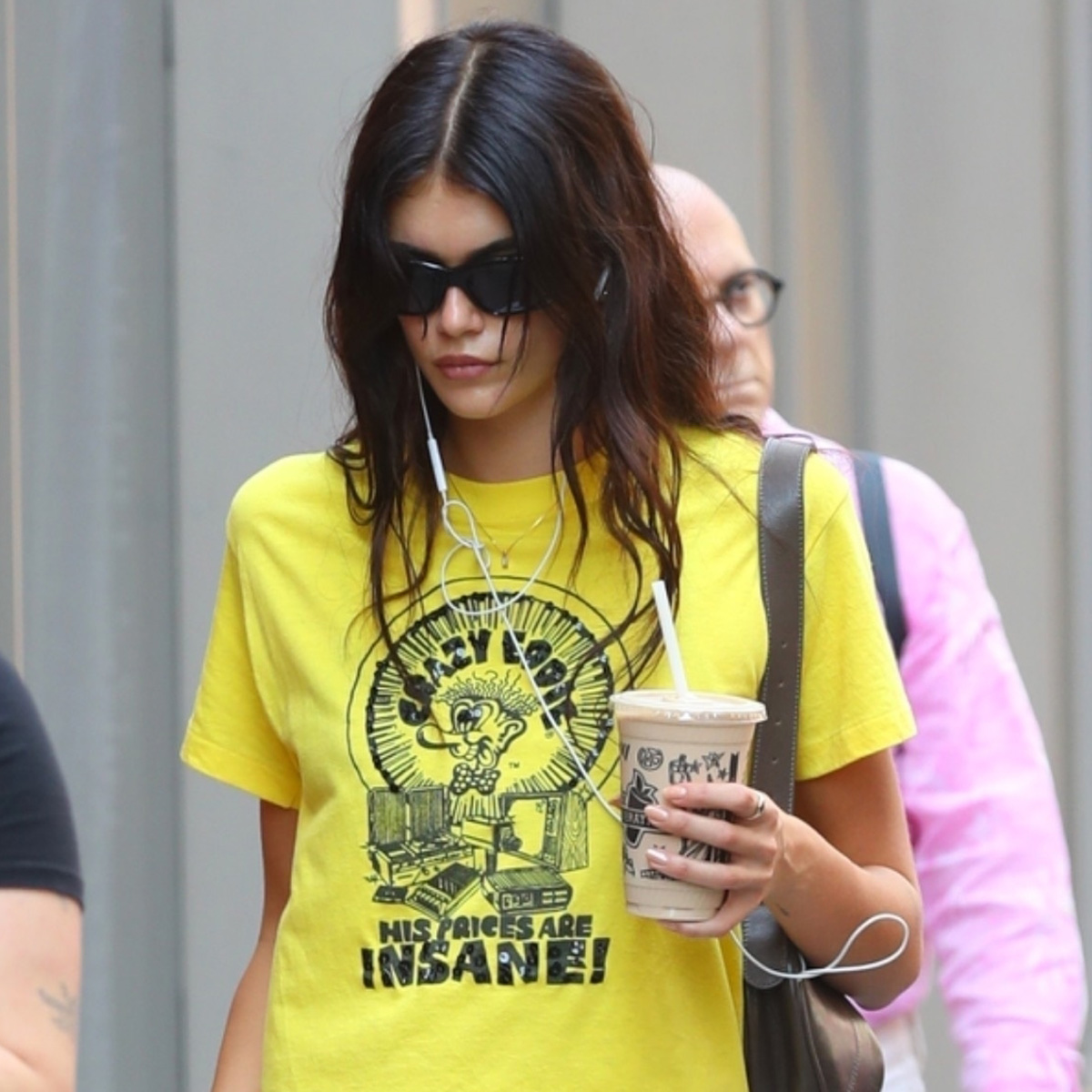 Kaia Gerber Wore the Anti-Denim Skirt Trend That Goes With Both Sneakers and Flats
Kaia Gerber Wore the Anti-Denim Skirt Trend That Goes With Both Sneakers and FlatsA summer staple.
By Eliza Huber
-
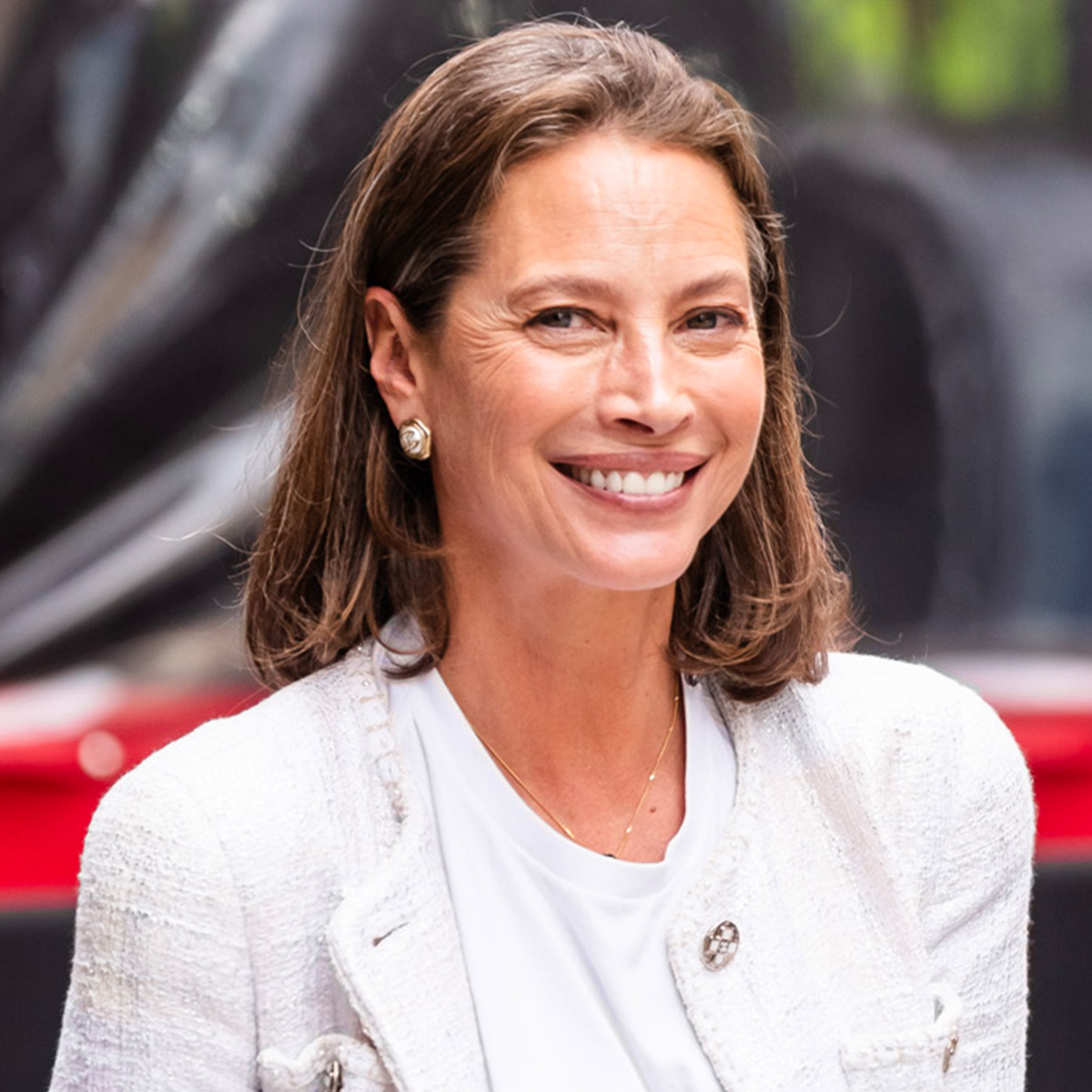 Christy Turlington Wore the Jacket Trend That Will Always Make Jeans Look Elegant
Christy Turlington Wore the Jacket Trend That Will Always Make Jeans Look ElegantA timeless choice.
By Eliza Huber
-
 Kate Moss Wore a Lingerie-Inspired Micro Minidress in the Sleekest Way Possible
Kate Moss Wore a Lingerie-Inspired Micro Minidress in the Sleekest Way PossibleDon't tell anyone, but I'm about to copy her.
By Eliza Huber
-
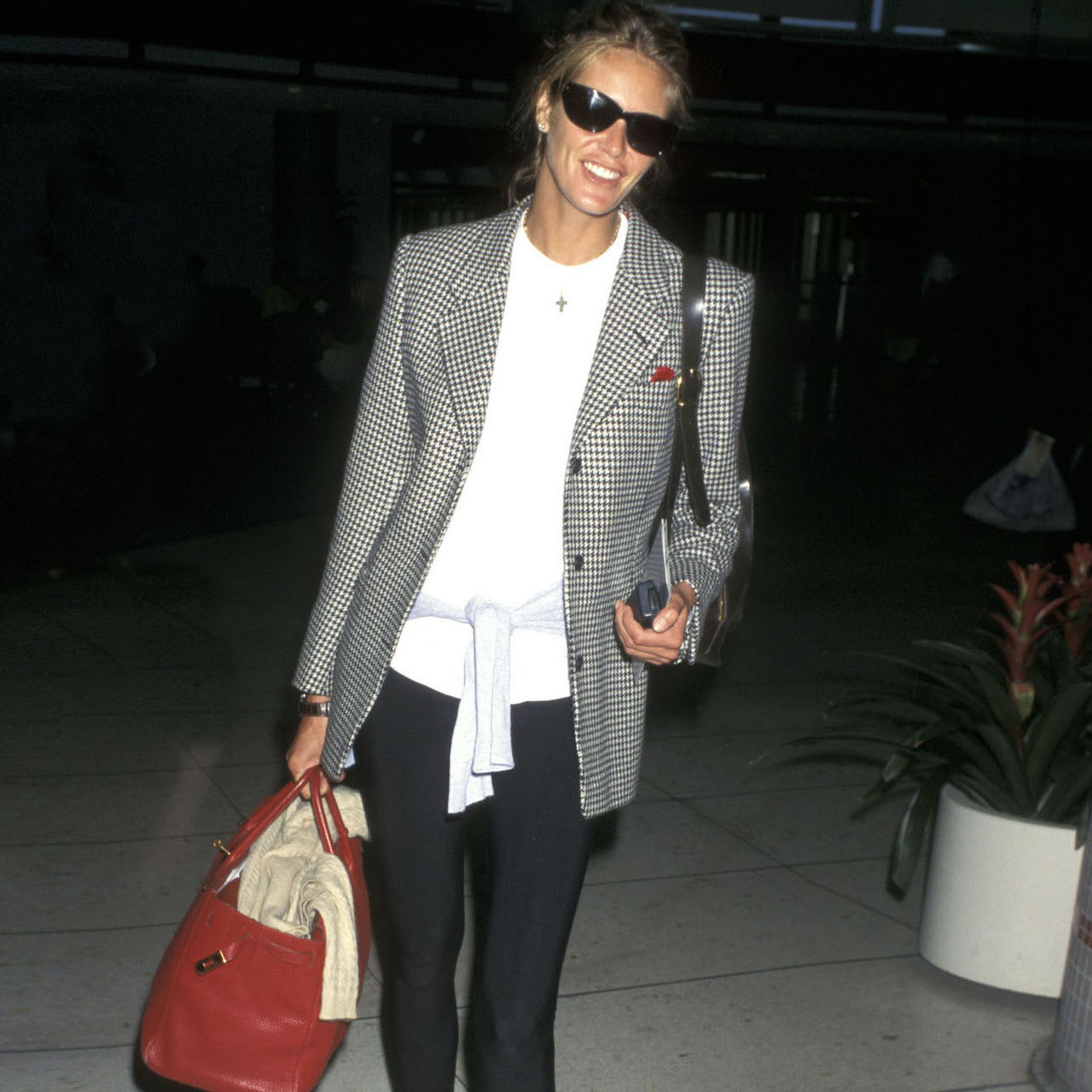 I'm Saving This '90s Supermodel's Airport Looks for All My Travel Days in 2024
I'm Saving This '90s Supermodel's Airport Looks for All My Travel Days in 2024Each one is comfortable and super chic.
By Jennifer Camp Forbes
